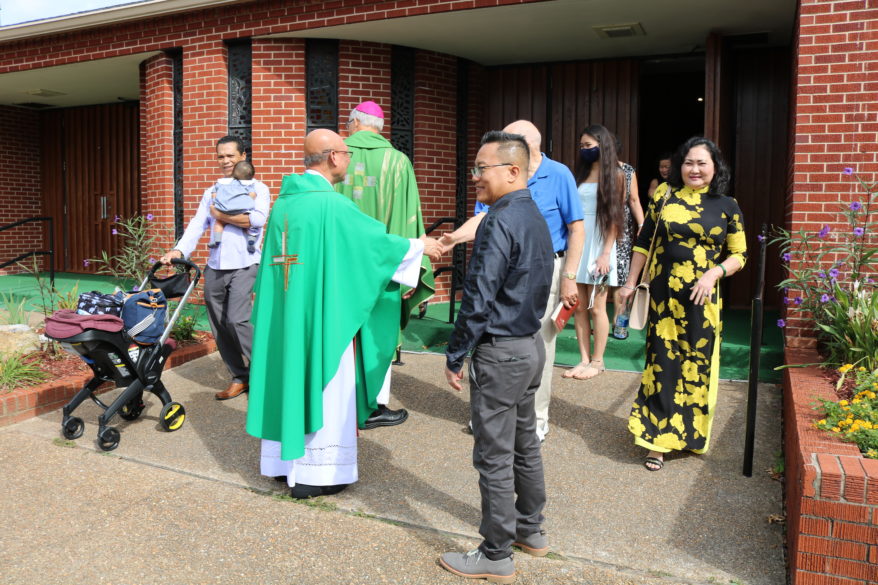
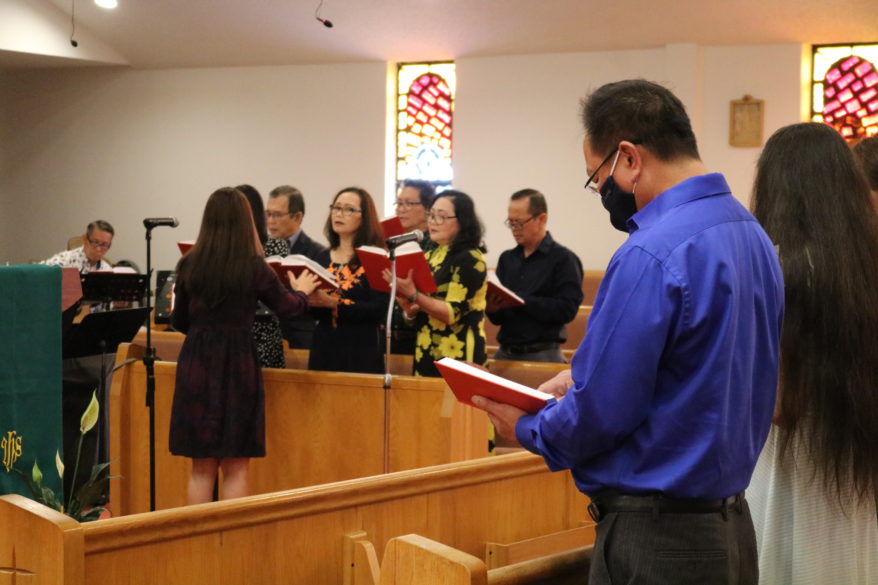
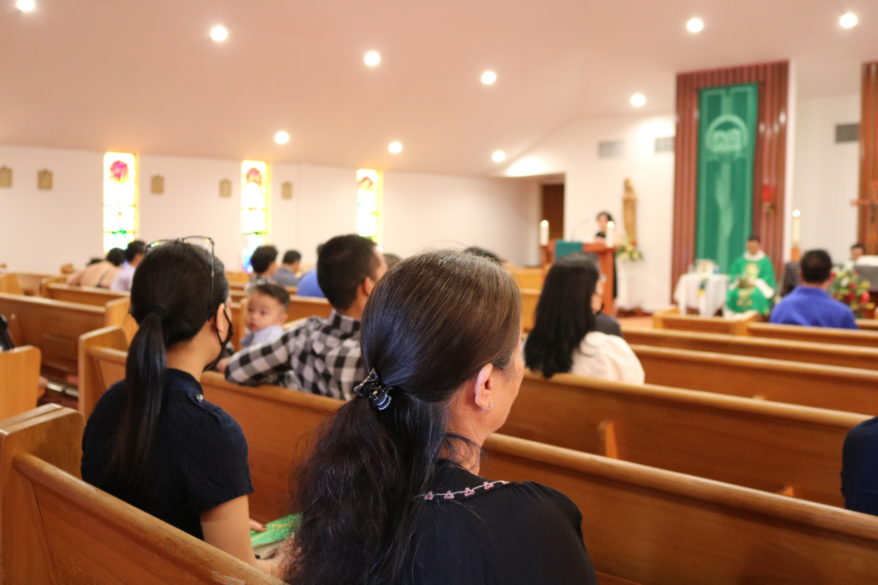
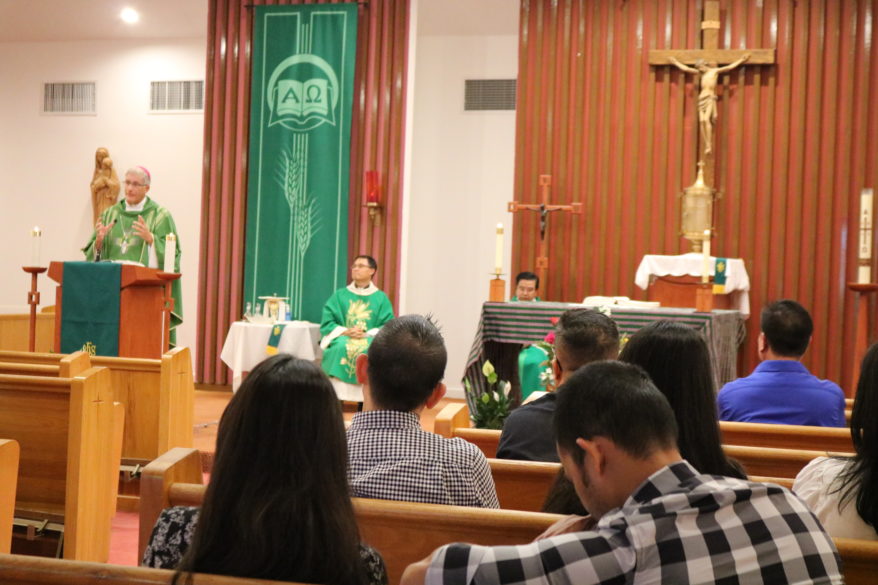
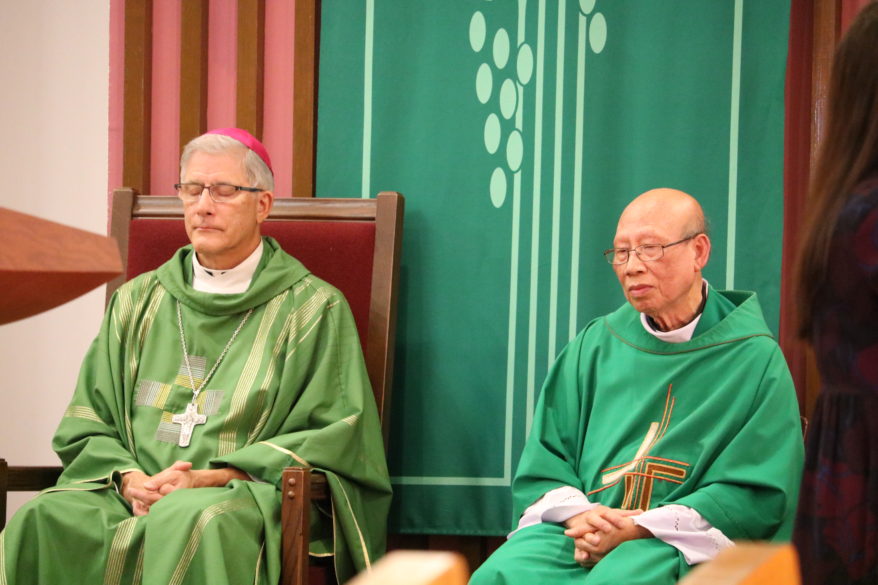
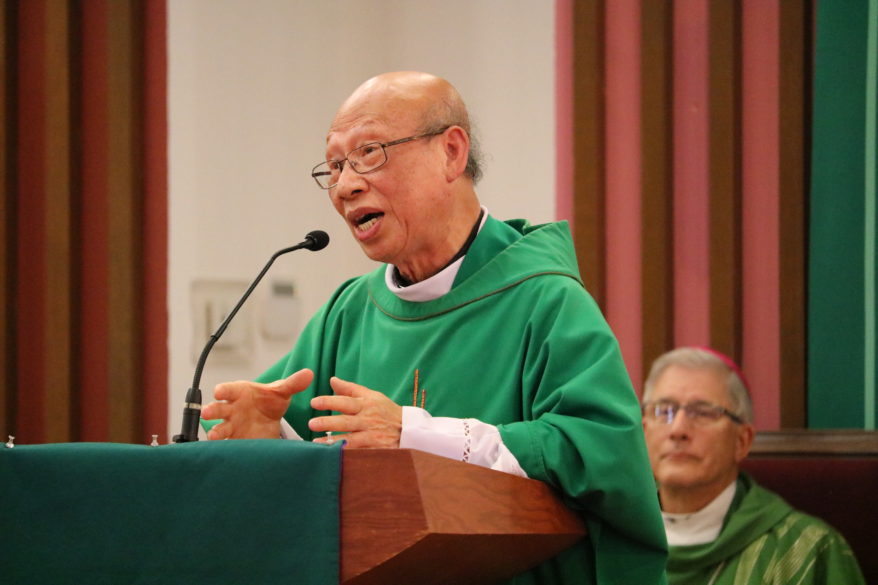
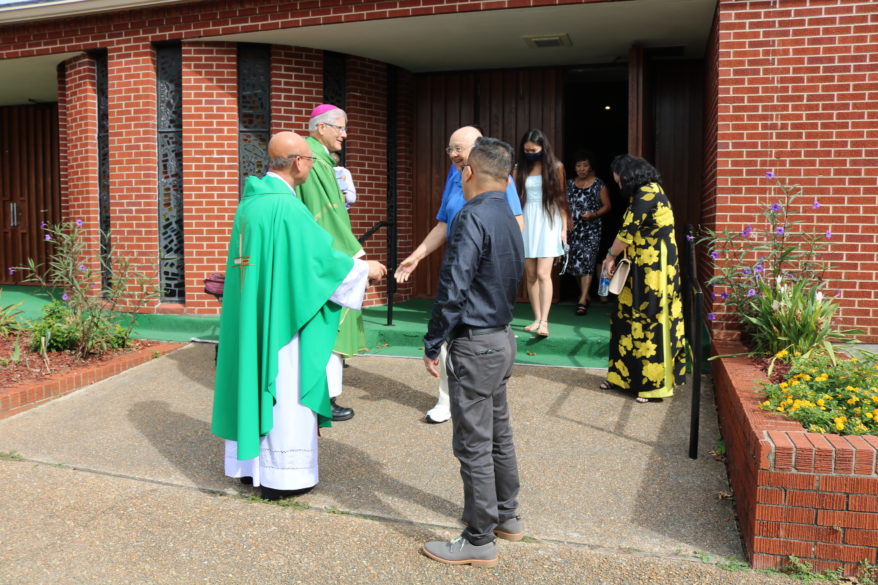
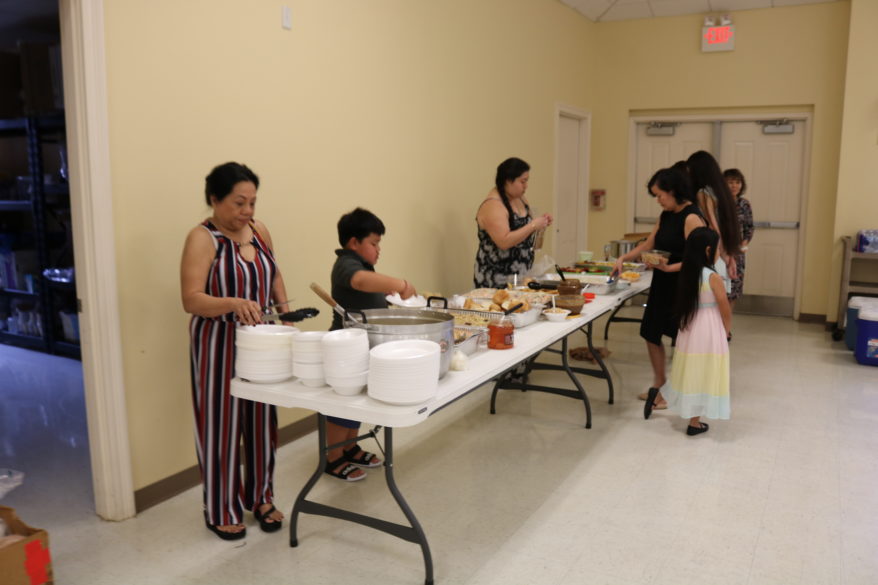
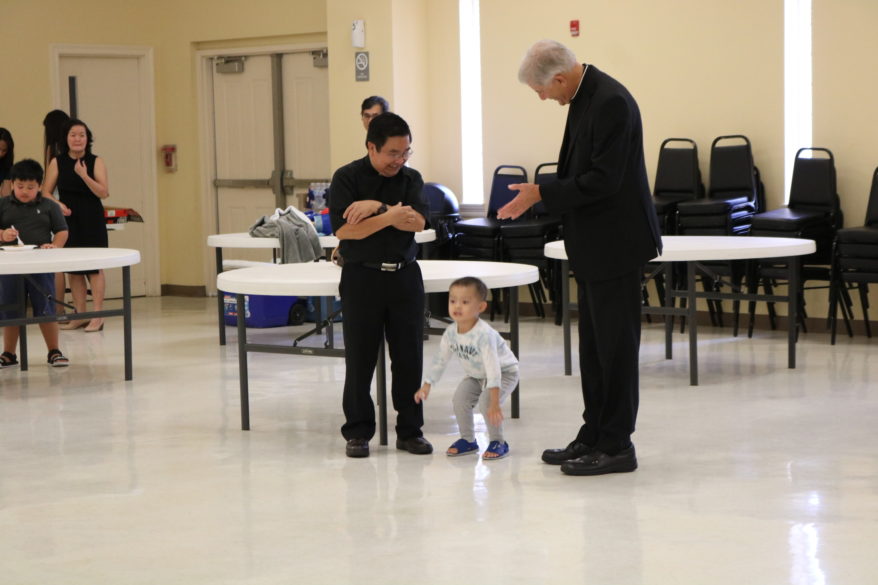
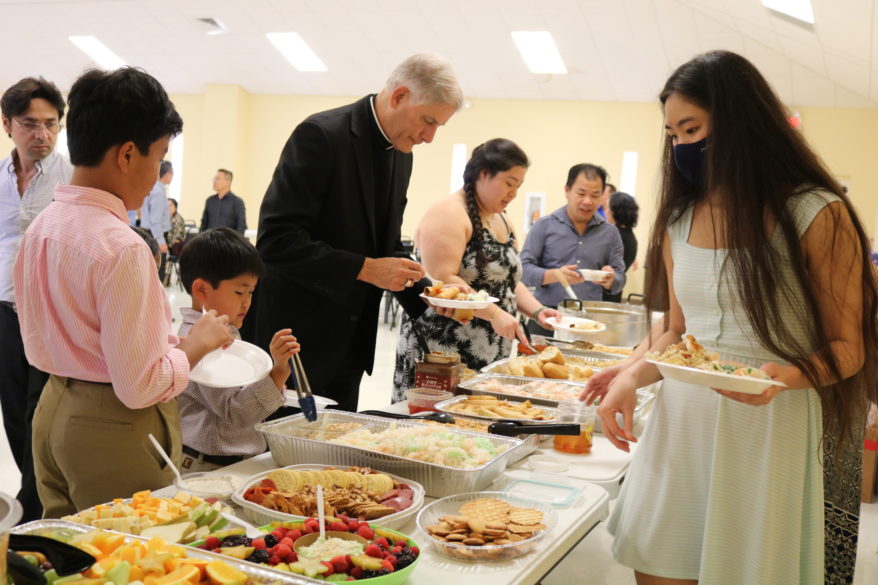
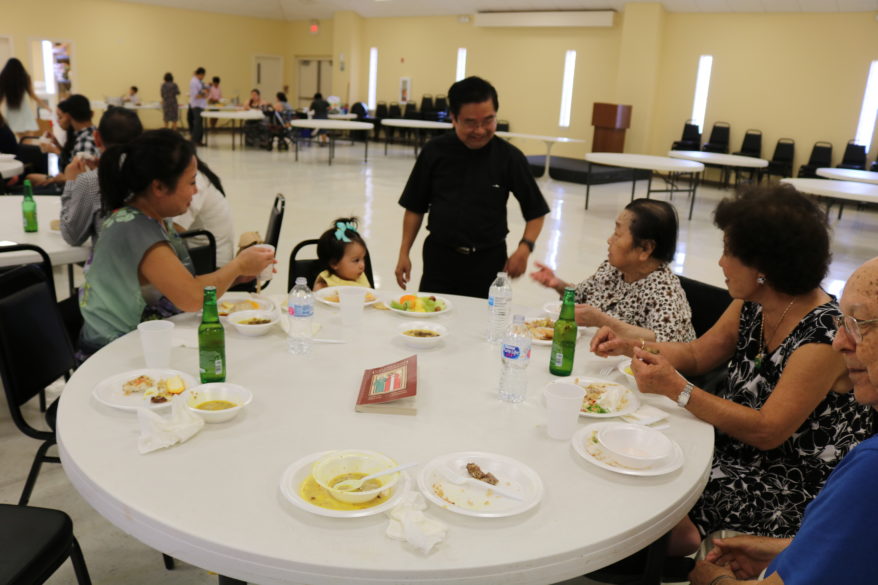
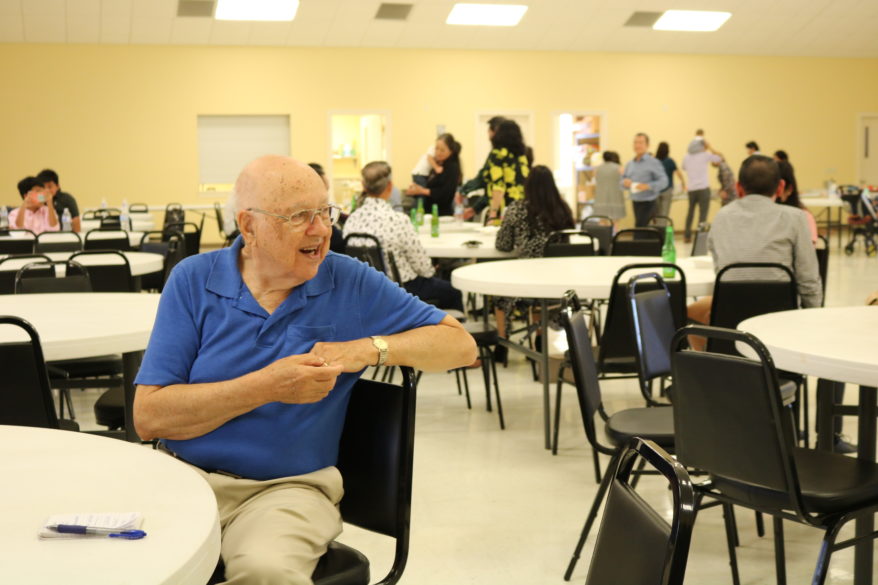
Mr. Khiem Thi Sneary












SPIRITUAL ENRICHMENT
JACKSON St. Richard Bereavement Support Group will again hold a special Candle-light Remembrance Celebration on Thursday, Dec. 9, at 6:30 p.m. in Foley Hall. There will be a discussion of various ways to honor our deceased loved ones followed by a brief candle-light prayer service. Each couple or person will be given a candle to light in honor of as many loved ones as they wish to remember by name. You may then take your candle home to light again on Christmas Day. A social time follows the service. It is a very beautiful and comforting time for all. Please RSVP, so that we will know how many to plan for and the number of candles needed. Event is open to all, regardless of how long ago the death occurred or your church affiliation. Details: please call Suzie Cranston (601) 573-3347, Nancy McGhee (601) 942-2078 or email ncmcghee@bellsouth.net.
NATCHEZ St. Mary Basilica, Second printing of Father David O’Connor’s book – A Priestly Pilgrimage, now available. The book is described as “an autobiographical narrative told through the sub-stories of an evolving theology, ministry skills development, cultural transitions, and programs that are responsive to the pastoral needs of God’s people.” Details: His book is available at the parish offices of St. Mary, Assumption and Holy Family churches, at the Natchez Coffee Company (Franklin Street), at Locus Benedictus Retreat Center (Greenwood) or by contacting the author, doconnor.natchez@gmail.com. For a book to be shipped call (601) 442-7250. Cost: $20/plus shipping.
PEARL St. Jude, Sung Mass in Extraordinary Form, first and third Sundays of each month at 6 p.m. Details: church office (601) 939-3181.
PARISH, FAMILY AND SCHOOL EVENTS
CANTON Sacred Heart, Ladies Stretch Classes, Thursdays, Dec. 2-23 at 10 a.m. led by Teresa Speer in the Sacred Heart Parish Center. Details: Jo Lynn at (601) 941-0821 or Teresa at (769) 233-1989.
FLOWOOD St. Paul, Mississippi Association of Returning Citizens (MARC) will be resuming re-entry classes in prisons in January 2022. If you are interested in serving in this ministry and helping incarcerated men and women “Get Ahead While Getting Out,” make plans to attend a training session in the Family Life Center on Saturday, Dec. 11 from 9:30 a.m. to 1 p.m. Details: Bob Pavolini at (334) 717-0890.
MADISON St. Francis, Ring in Your Faith 10k/5k, Jan. 1, 2022 at 8 a.m. at Old Trace Park in Ridgeland. Finisher medals for all and t-shirts for everyone who registers by Dec. 16. Also will serve New Year’s meal of corned beef, black-eyed peas and cabbage! Cost: $30. Details: register at https://bit.ly/RingInYourFaith.
NATCHEZ Assumption of BVM, Bingo, Sunday, Dec. 12 in Tutie Hall beginning 10 a.m. They will play 10 games and break for a burger lunch, then resume for another 10 games. To donate prizes, bring items or gifts before Dec. 12. Details: (601) 442-7250.
OLIVE BRANCH Queen of Peace, Manger Lighting, Tuesday, Dec. 7 at 7 p.m. In union with Knights of Columbus through out the world, there will be prayer, a ceremonial blessing and lighting of the manger. Details: church office (662) 895-5007.
Queen of Peace, Annual Women’s Club Bake Sale, Saturday/Sunday, Dec. 11-12. Parishioners are asked to donate a baked item. Please sign up in the Commons area. Details: church office (662) 895-5007.
YOUTH BRIEFS
HERNANDO Holy Spirit, Wednesday night “Open Gym” 5:30-6:30 p.m. in the Family Life Center. Make plans to come Wednesdays and enjoy food, fun and games. Details: church office (662) 429-7851.
NATCHEZ St. Mary Basilica, Santa Breakfast, Saturday, Dec. 11 from 8:30-10:30 a.m. at the Family Life Center. Details: Carrie Lambert at (601) 920-9538.
TUPELO St. James, Disciple Now – Rhythms, Jan. 14-16, for 7-12 graders. Cost: $50. Details: email Cara at carambristow@gmail.com.
St. James, Christmas VBS – Follow the Star, Saturday, Dec. 18 from 9 a.m. to 2:30 p.m for ages three through sixth grade at the St. James Catholic Life Center. Register by Dec. 8. Details: Lora Beth at (662) 213-7959 or lorabethb@gmail.com.
SAVE THE DATE
JACKSON Cathedral of St. Peter the Apostle, World Day Marriage on Sunday, Feb. 13, 2022 at 3 p.m., there will be Mass celebrated by Bishop Joseph Kopacz. The Mass honors all married couples, but especially invites those celebrating their 25th, 50th and 60th anniversaries. Details: to have your anniversary recognized, call your parish office or email charlene.bearden@jacksondiocese.org.
JACKSON St. Richard School, Krewe de Cardinal, Friday, Feb. 25, 2022. This festive evening features a brass band, silent and live auctions, a cash drawing, and cocktails and cuisine. Tickets are $50/per person or $100/per couple in advance. Sponsorships are available and come with reserved seating and an invitation to the pre-event VIP Cocktail Hour. Details: development@strichardschool.org.
MADISON St. Joseph School, Jeans, Jazz & Bruin Blues $10,000 Draw Down, Saturday, Jan. 29, 2022 at the Country Club of Jackson. To sponsor or purchase a draw down ticket visit www.stjoedrawdown.com.
Por Carol Zimmermann
WASHINGTON (CNS) — En el primer caso importante sobre el aborto en la Corte Suprema en décadas, que examinó la prohibición de Mississippi sobre los abortos después de 15 semanas de embarazo, la mayoría de los jueces parecían dispuestos el 1 de diciembre a dejar que la prohibición se mantenga.
Pero no estaba claro si irían más allá y anularían el antecedente de Roe contra Wade que permitió el aborto en EE.UU. como un derecho.
Mientras los jueces consideraban la ley estatal y las posibles ramificaciones de apoyarla o no, partidarios de ambos lados del asunto estaban en las escalinatas de la Corte Suprema exponiendo la división en este tema por lo que gritaban o con sus mensajes en pancartas calificaban al aborto como un asesinato o un derecho esencial.
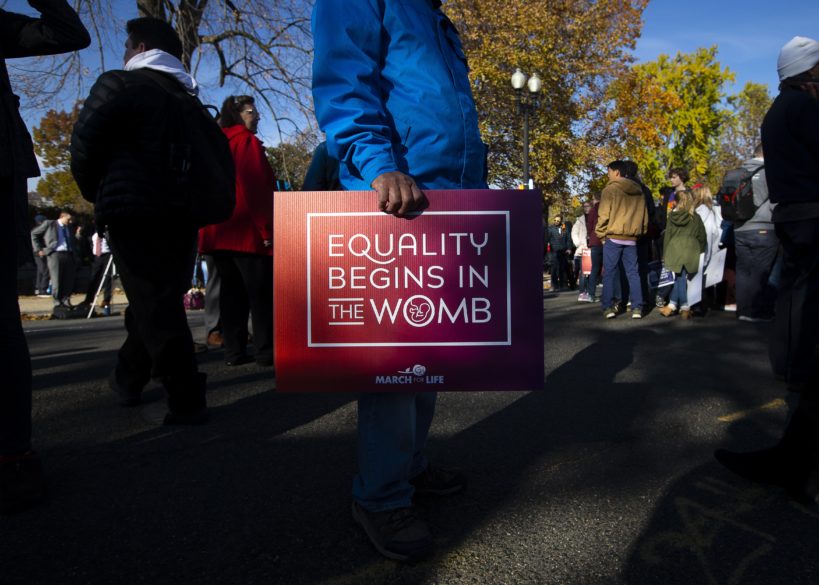
En varios momentos en la etapa de argumentos, el presidente de la Corte Suprema de Estados Unidos, John Roberts, continuó centrando la atención en el tema principal: la prohibición de abortar a las 15 semanas en Mississippi, que fue anulada por un Tribunal Federal de Distrito en Mississippi en 2018 y confirmada un año después por el Tribunal de Apelaciones de Estados Unidos para el 5º Circuito, con sede en Nueva Orleans.
Una prohibición de 15 semanas no es “una desviación drástica de la viabilidad”, dijo Roberts.
El punto de viabilidad –cuando se dice que un feto es capaz de sobrevivir por sí mismo– fue clave en la discusión porque el Tribunal Supremo ha dictaminado sistemáticamente que los estados no pueden restringir el aborto antes de las 24 semanas o cuando se dice que un feto es capaz de sobrevivir por sí mismo.
Roberts parecía tener dudas en cuanto a llevar el asunto más allá al preguntar si en el caso que el tribunal anulara Roe vs. Wade, también se le pediría que reconsiderara varios otros casos que la gente podría decir que se han decidido erróneamente.
Y en esa discusión sobre decisiones anteriores del tribunal, el uso de “stare decisis” surgió con frecuencia. El término, que literalmente significa mantener lo que se ha decidido, se utilizó en referencia a casos anteriores sobre el aborto, pero también a otros varios casos en los que algunos jueces señalaron que el precedente no debería ser siempre un factor decisivo y que algunos casos debían ser revocados.
El juez Stephen Breyer indicó que el tribunal estaba pisando un terreno controversial y que le preocupaba que su decisión pudiera ser vista como algo meramente político.
La jueza Sonia Sotomayor fue más allá y dijo que el tribunal sería visto como altamente politizado si anulaba el antecedente Roe y otros fallos relacionados. “¿Sobrevivirá esta institución el mal olor que esto crearía en la percepción pública de que la Constitución y su lectura son sólo actos políticos?”, preguntó. “No veo cómo es posible”.
Pero a medida que los argumentos continuaban, la mayor reflexión parecía centrarse en la cuestión del aborto en sí y en la posibilidad de devolver el asunto “al pueblo”, como sugirió el procurador general de Mississippi, Scott Stewart.
Stewart subrayó que las decisiones judiciales Roe y Casey “persiguen a nuestro país” y “no tienen cabida en nuestra historia ni en nuestras tradiciones”.
El caso Casey contra Planned Parenthood es la decisión de 1992 que afirmó el fallo en Roe y también subrayó que una regulación estatal sobre el aborto no podía imponer una “carga indebida” a una mujer “que busca un aborto antes de que el feto alcance la viabilidad”.
El juez Brett Kavanaugh enfatizó que el tribunal se estaba viendo obligado a “elegir un bando” en un tema polémico y cuestionó por qué el tribunal tenía que ser el árbitro aquí.
“La Constitución no está ni a favor de la vida ni a favor del aborto”, dijo, y señaló que “deja la cuestión al pueblo para que la resuelva en el proceso democrático”.
El juez Clarence Thomas preguntó qué pensaban los que se oponían a la prohibición estatal sobre el derecho constitucional al aborto, y el juez Samuel Alito habló de que el feto tiene “un interés en tener una vida”.
Julie Rikelman, del Centro de Derechos Reproductivos, que representó a la Organización de Salud de la Mujer de Jackson en su impugnación de la ley de aborto de Mississippi, dijo que mantener la ley en vigor causaría “un profundo daño a la libertad de la mujer, a la igualdad y al estado de derecho”.
La procuradora general de EE.UU., Elizabeth Prelogar, continuó argumentando que anular las sentencias anteriores del tribunal sobre el aborto tendría efectos “graves y rápidos” que provocarían restricciones al aborto en otros estados.
Si el tribunal da la razón a Mississippi, sería la primera vez que el tribunal permitiría una prohibición del aborto antes del punto de viabilidad y podría sentar las bases para otras restricciones al aborto que podrían seguir en otros estados.
La Conferencia de Obispos Católicos de EE.UU., en un escrito judicial de apoyo a Mississippi, subrayó que el aborto no es un derecho creado por la Constitución y lo calificó de “intrínsecamente diferente de otros tipos de decisiones personales a las que este tribunal ha concedido protección constitucional”.
Refiriéndose a las principales decisiones del tribunal sobre el aborto, el escrito advertía que si el Tribunal Supremo “sigue tratando el aborto como una cuestión constitucional”, se enfrentará a más preguntas en el futuro sobre “qué tipo de regulaciones del aborto son permisibles”.
Justo cuando comenzaron los argumentos, la USCCB emitió una declaración del arzobispo William E. Lori de Baltimore, presidente del Comité de Actividades Pro-Vida, que decía: “Rezamos para que el tribunal haga lo correcto y permita que los estados vuelvan a limitar o prohibir el aborto y, al hacerlo, protejan a millones de niños no nacidos y a sus madres de este doloroso acto que destruye la vida”.
Se espera un fallo sobre el caso en julio.
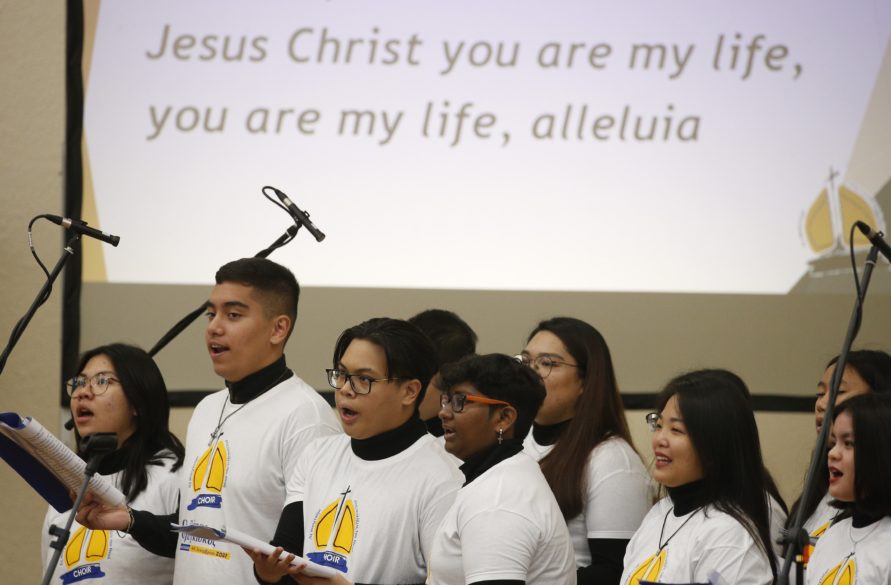
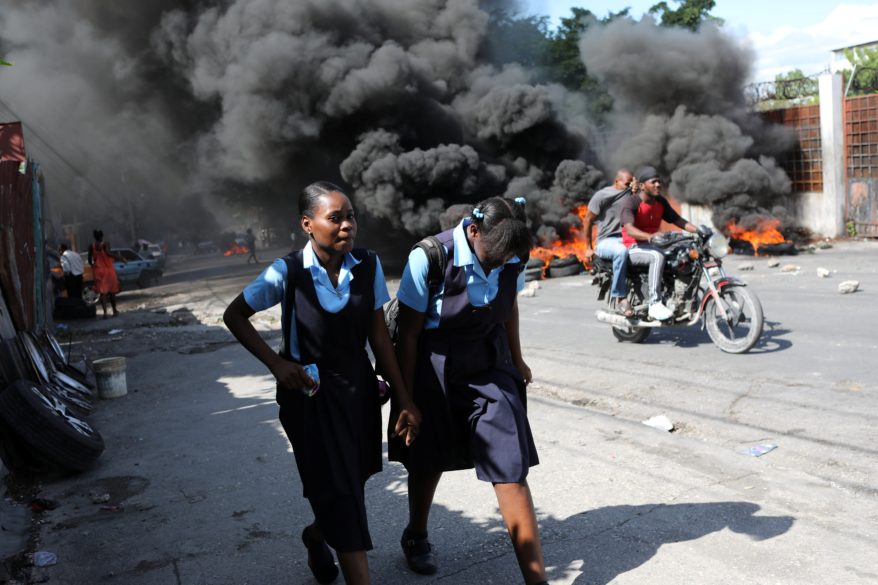
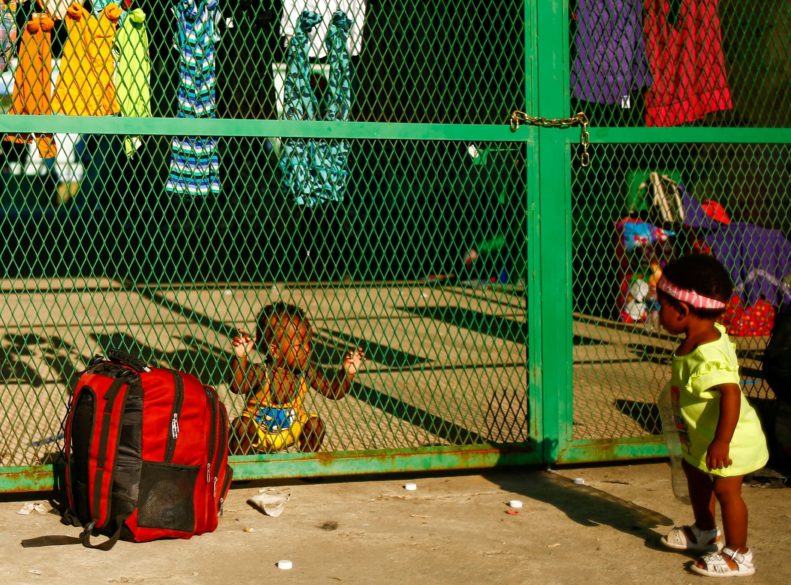
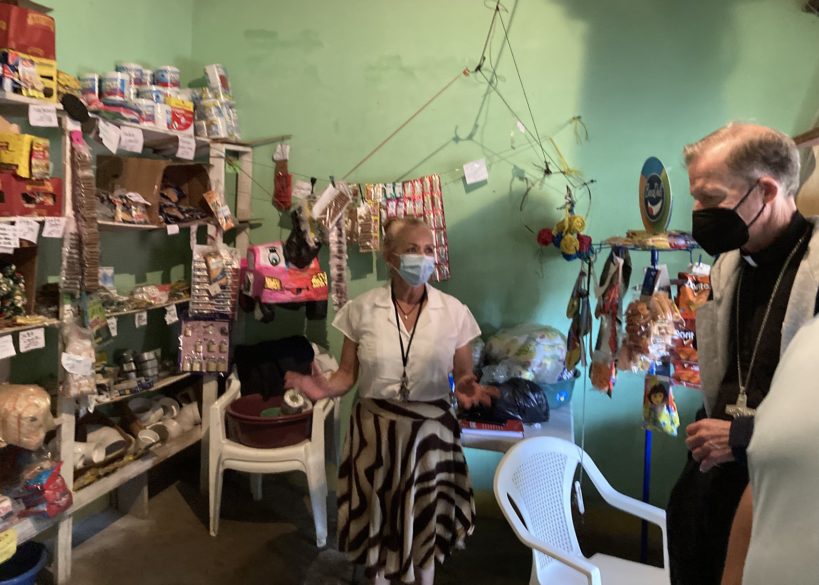
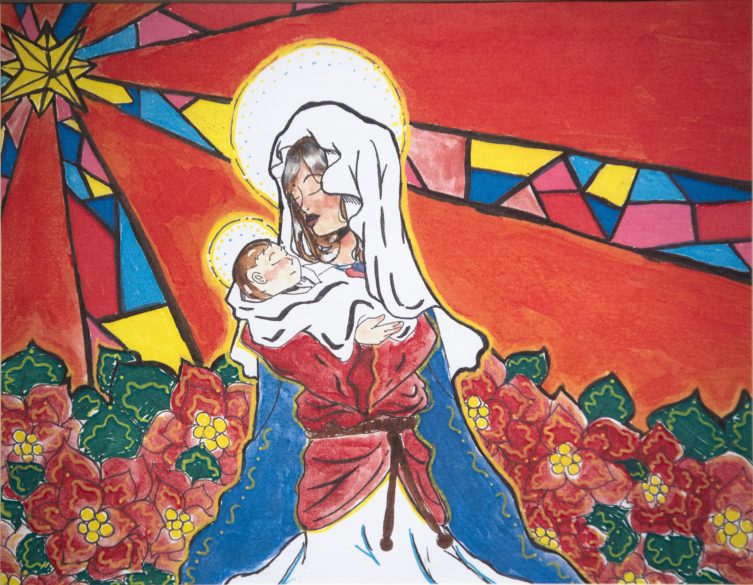
Por Cindy Wooden
CIUDAD DEL VATICANO (CNS) — Continuando con el enfoque en la atención de migrantes y refugiados, el papa Francisco instó a una organización de la ONU a hacer más para convencer a las naciones de que abran vías seguras y legales para la migración y regularizar a las personas que han ingresado a países sin documentos adecuados.
En un mensaje enviado el 29 de noviembre a la Organización Internacional para las Migraciones, el papa Francisco dijo: “Existe una necesidad urgente de encontrar formas dignas de salir de situaciones irregulares”.
“La desesperación y la esperanza siempre prevalecen sobre las políticas restrictivas”, dijo, por lo que la migración continuará sin importar lo que hagan los países. “Cuantas más rutas legales existan, menos probable es que los migrantes se vean arrastrados a las redes criminales de los traficantes de personas o a la explotación y el abuso en contravención de la ley”.
El mensaje del papa fue leído por el cardenal Pietro Parolin, secretario de Estado del Vaticano, en una reunión para conmemorar el 70 aniversario de la agencia de la ONU. En 2011, el papa retirado Benedicto XVI decidió que la Santa Sede se convertiría en miembro de la organización.
Si bien insistir en la creencia de la dignidad humana significa que los migrantes deben ser tratados como individuos y no como un “fenómeno”, el papa Francisco también sugirió las políticas necesarias para ayudar tanto a las personas en movimiento como a los países donde buscan una vida mejor.
“Los migrantes hacen visible el vínculo que une a toda la familia humana, la riqueza de las culturas y el recurso para los intercambios de desarrollo y las redes comerciales”, dijo, pero eso siempre depende de la integración de los recién llegados.
“La integración implica un proceso bidireccional, basado en el conocimiento mutuo, la apertura mutua, el respeto a las leyes y la cultura de los países anfitriones con un verdadero espíritu de encuentro y enriquecimiento mutuo”, dijo.
Mantener a las familias migrantes intactas o ayudar a reunir a las familias es esencial, ya que las familias son “un componente esencial de las comunidades en nuestro mundo globalizado”, dijo. Lamentablemente, “en demasiados países a los trabajadores migrantes se les niegan los beneficios y la estabilidad de la vida familiar como resultado de impedimentos legales. El vacío humano que se deja cuando un padre o una madre emigran solos es un duro recordatorio del abrumador dilema de verse obligados a elegir entre emigrar solo para alimentar a la familia o disfrutar del derecho fundamental a permanecer en el país de origen con dignidad”.
Y dijo que en vez de simplemente quejarse de los flujos migratorios, “la comunidad internacional debe abordar urgentemente las condiciones que dan lugar a la migración irregular” (pobreza, conflicto, discriminación, cambio climático) para que la migración sea un bien, una decisión informada y no una necesidad desesperada.
“En última instancia”, dijo el papa Francisco, “la migración no es solo una historia de migrantes, sino de desigualdades, desesperación, degradación ambiental, cambio climático” pero también de “sueños, valor, estudios en el extranjero, reunificación familiar, nuevas oportunidades, seguridad y protección, y trabajo duro pero digno”.
Por Fran Lavelle
El Año de la Eucaristía se inauguró en nuestra diócesis en la Fiesta de Cristo Rey y se celebrará hasta el año litúrgico 2022.
Nuestro tema, “Quédate con nosotros, Señor”, proviene del evangelio de Lucas (Lc 24: 13-49) al que se hace referencia como la historia de Emaús. En él escuchamos acerca de dos discípulos, de camino a Emaús, hablando de los recientes acontecimientos en Jerusalén. Jesús se encontró con los dos en el camino y habló con ellos mientras continuaban su viaje, aunque no lo reconocieron. Al acercarse la noche, instaron a Jesús a que se quedara con ellos. Mientras estaba a la mesa, Jesús tomó pan, lo bendijo, lo partió y se lo dio. Con eso se les abrieron los ojos y reconocieron a Jesús.
“El viaje más largo es de la cabeza al corazón”
Un elemento central de la historia de Emaús es el viaje de los dos discípulos. No solo el viaje físico de Jerusalén a Emaús, sino el viaje de fe y creencia en Cristo resucitado. Hay un viejo dicho atribuido a los indios Sioux: “El viaje más largo es de la cabeza al corazón”. Esto es cierto especialmente cuando se trata de asuntos de fe. Nuestra capacidad de creer en lo que no vemos y lo que no entendemos requiere mucha confianza y fe. Creer y comprender la Eucaristía es una de esas cosas que requiere una gran fe y confianza.
Si no ha considerado su deseo al recibir la Comunión en la Misa, le invito a que lo haga. Un sacerdote de Kentucky, amigo favorito, les recordaría a sus feligreses con regularidad que debemos chequearnos para asegurarnos que nos estamos volviendo un poco en lo que recibimos, que es Jesús. Si nuestra respuesta es no, debemos considerar por qué no. Si nuestra respuesta es sí, debemos pedirle a Dios la gracia de seguir siendo transformados por la Eucaristía.
Para encontrar un mayor significado en los aspectos devocionales del Año de la Eucaristía, es oportuno centrarnos en nuestra comprensión personal de la Eucaristía. No importa cuántos años tengas o cuántos años hayas comulgado, haz que éste sea el año en el que te sumerjas más profundamente. Hay muchos, grandes libros, escritos sobre el tema por muchos teólogos dignos, desde la Summa Theologiae de Santo Tomás de Aquino hasta estudios más modernos como La Eucaristía: Sacramento del Reino de Alexander Schememann o el libro más reciente del Obispo Barron simplemente titulado Eucaristía. El punto es leer algo que te ayude a seguir siendo transformado por la Eucaristía.
Otra idea es pensar en cómo estamos presentes durante la Misa. Cuando estaba trabajando en mi maestría, tomé un curso sobre las oraciones eucarísticas. Antes de ese curso, nunca los había leído independientemente de la Misa. Hicimos una combinación de exégesis y Lectio Divina del texto. Al hacerlo, me di cuenta del texto de una manera más completa y que más me resonó. Me abrió una comprensión y una forma de pensar completamente nuevas sobre la Eucaristía. Entonces, en lugar de suspirar cuando el sacerdote comenzó la primera plegaria eucarística pensando que era larga, llegué a apreciar el mensaje lleno de esperanza que cada oración transmite de manera única.
El Año de la Eucaristía
En este año habrá devociones externas como procesiones eucarísticas, exposición y adoración y un Congreso Eucarístico diocesano. Todas estas, expresiones excepcionalmente buenas de fe y amor.
Pero también podemos realizar pequeños actos personales que nos acerquen a Jesús en la Eucaristía. Por ejemplo, ser consciente de cómo tratamos a las personas en el estacionamiento después de la Misa.
Cuando vivía en el norte de Virginia, siempre me asombraba que necesitáramos que la policía local nos ayudara a navegar el tráfico después de la Misa. Quiero decir, ¡ya teníamos el incentivo para ser amables los unos con los otros!, minutos después que varios cientos de personas acabaran de recibir a Jesús!
Es apropiado que digamos: ¡Quédate con nosotros, Señor! Quédate con nosotros más allá del rito de la despedida. Quédate con nosotros en nuestros autos, en el restaurante cuando comemos y cuando empecemos la nueva semana, ya sea en la escuela, el trabajo o en casa. ¡Quédate con nosotros, Señor! cuando estemos en las redes sociales, en eventos deportivos y en los lugares comunes en los que nos encontramos cada día. ¡Quédate con nosotros, Señor! y juntos podemos llegar a ser como tú. Dejemos que la Eucaristía sea el espejo que sostenemos para vernos crecer y ser un poco más como Jesús.
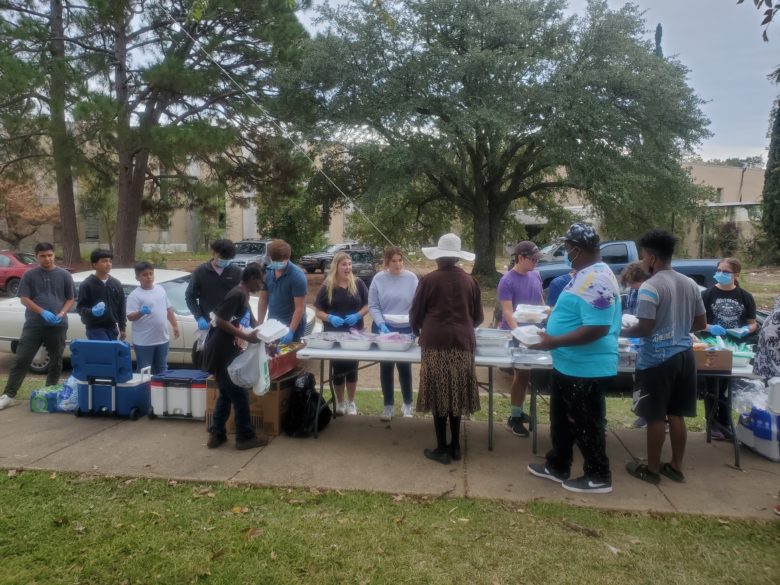
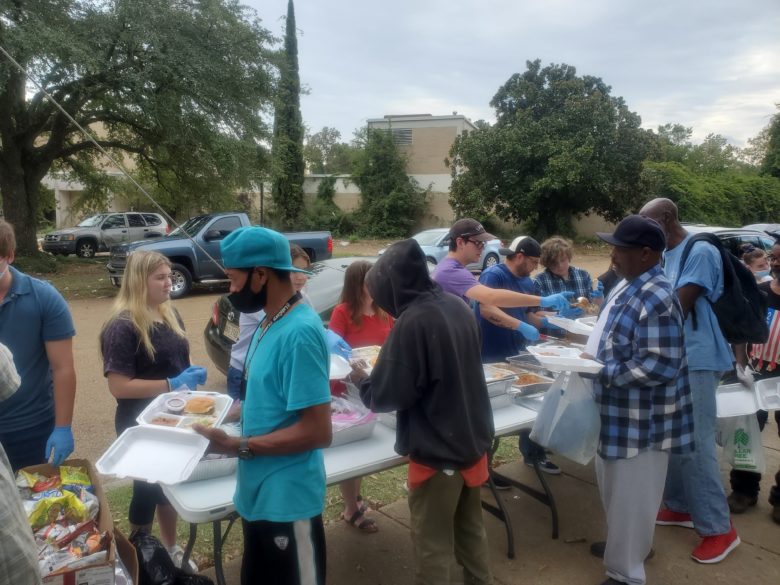
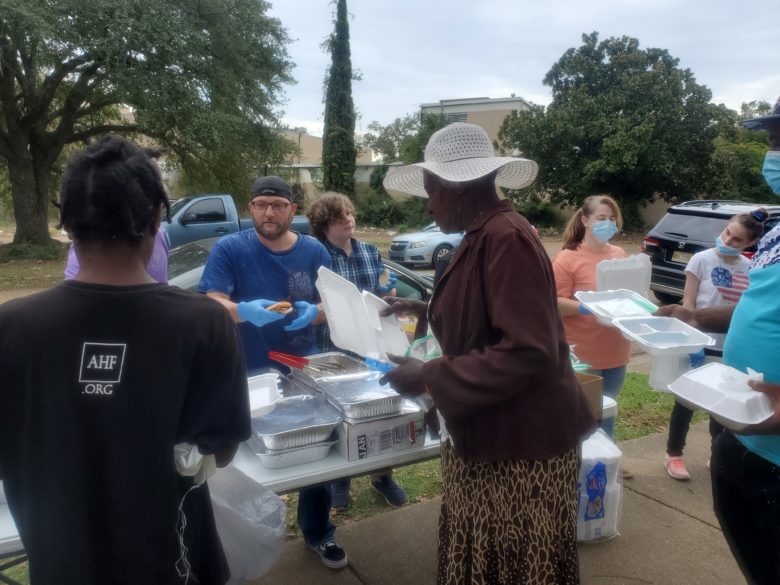
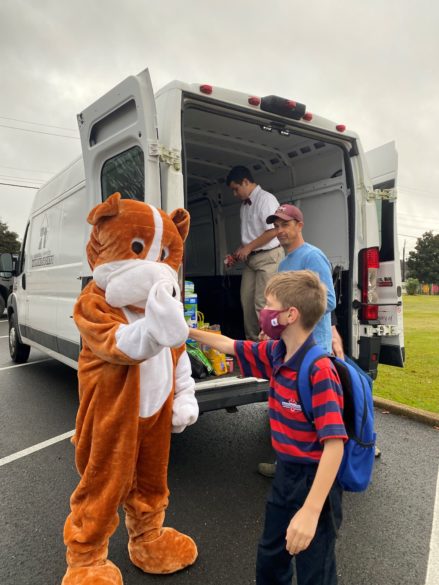
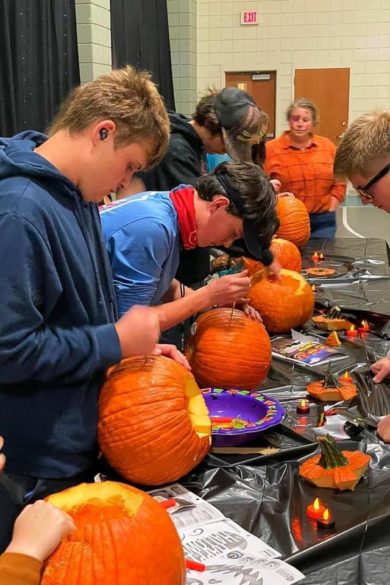
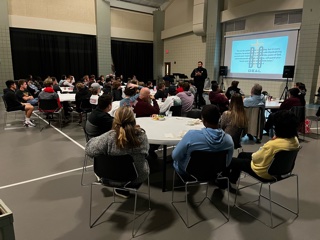


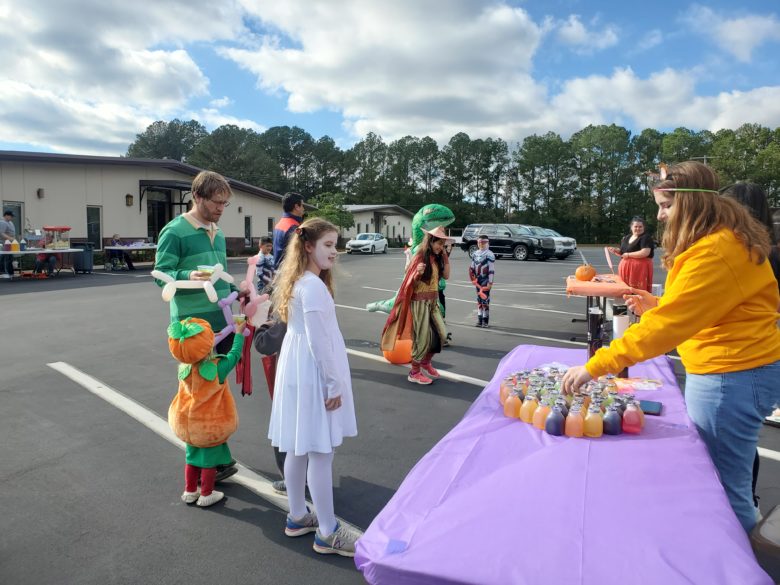
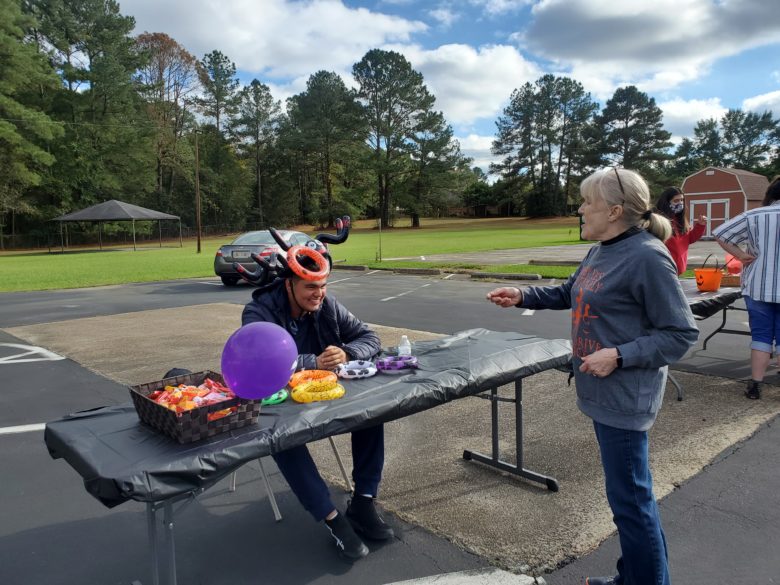
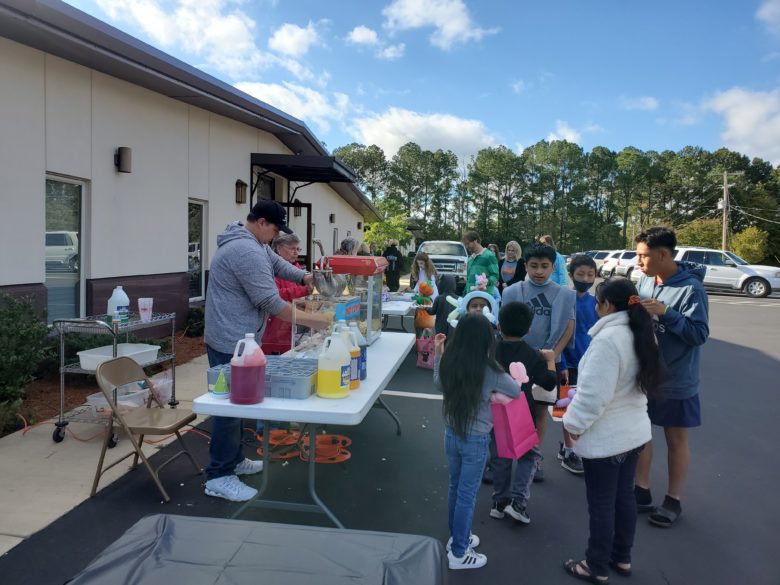
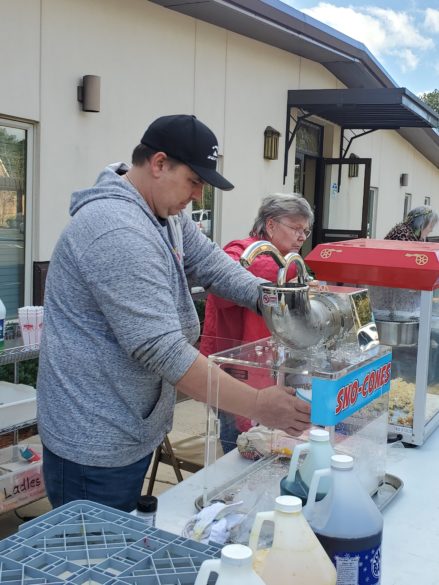
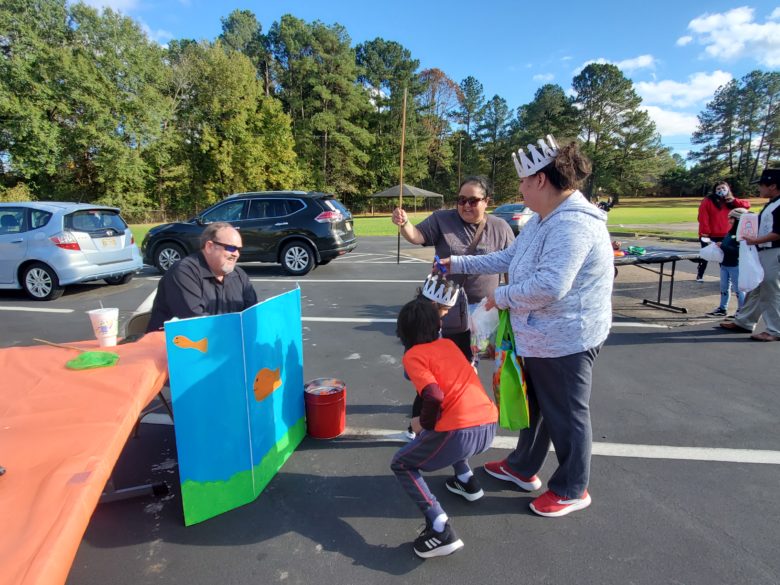
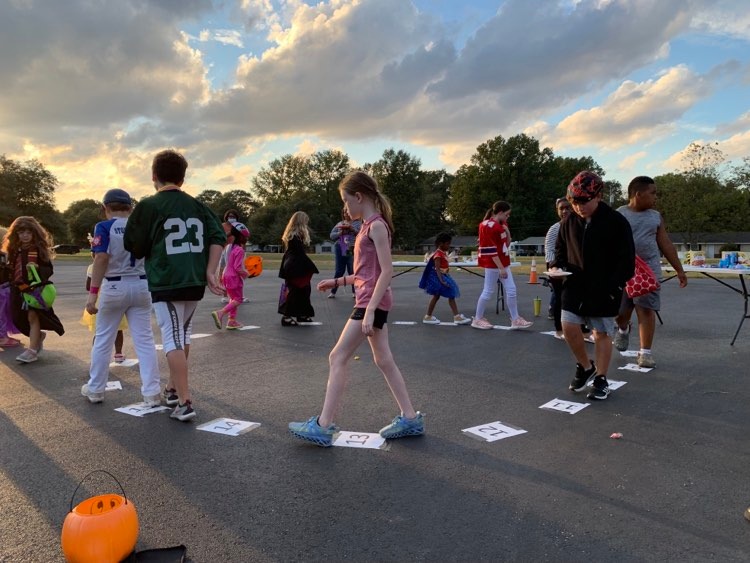
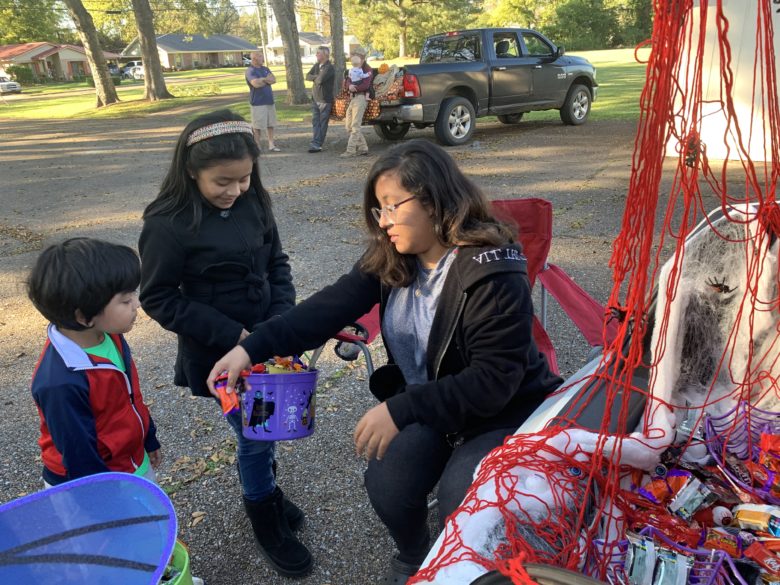
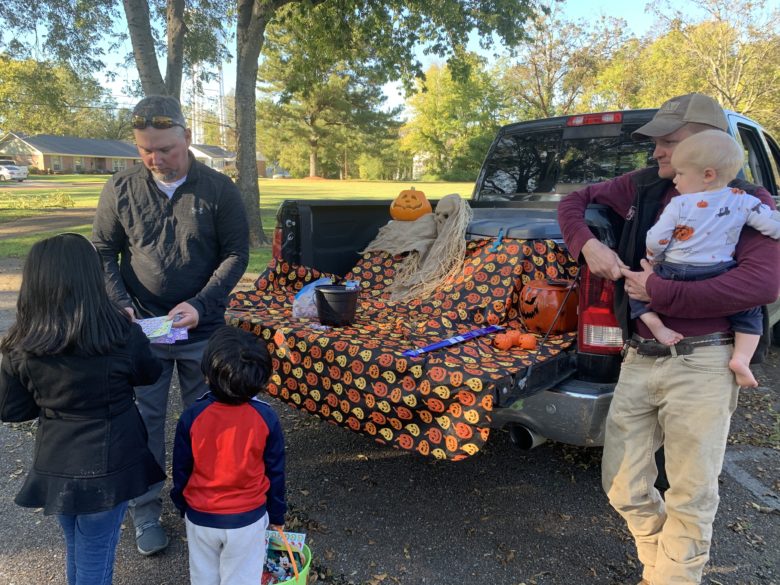
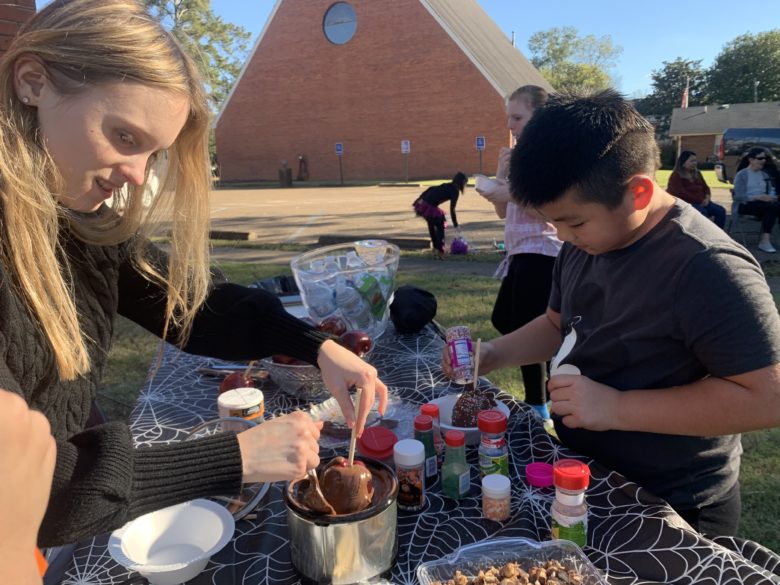
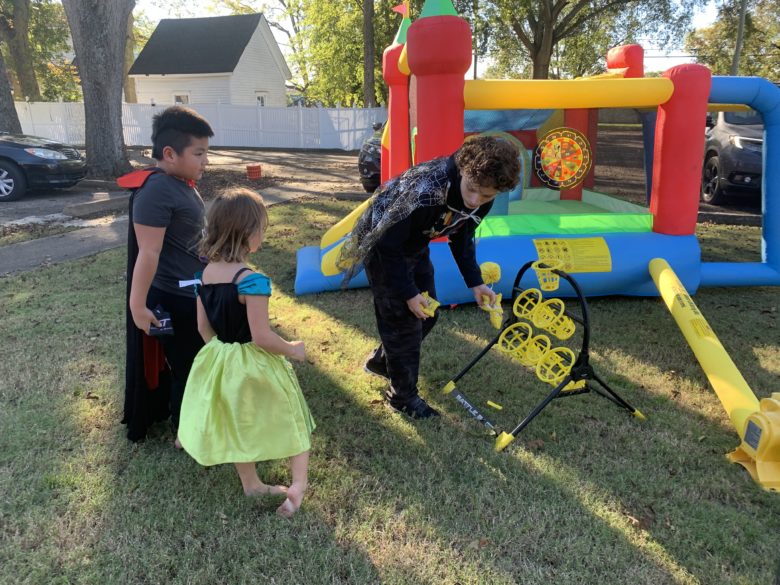
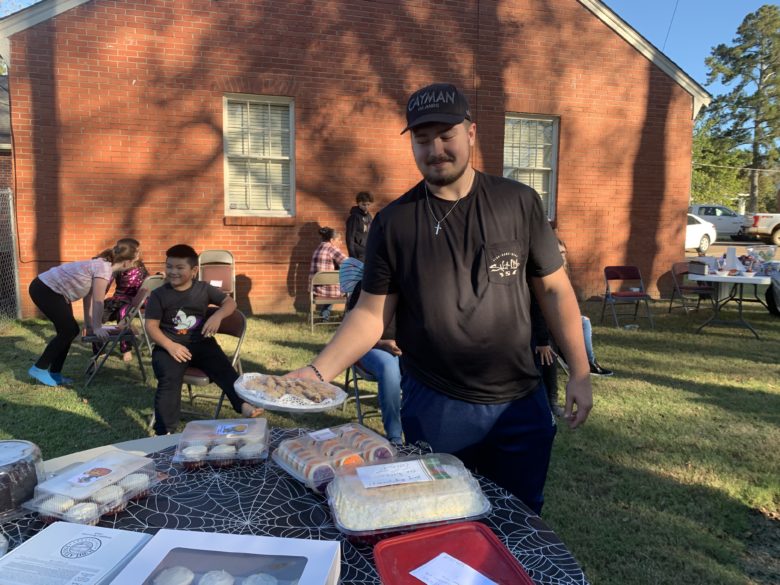
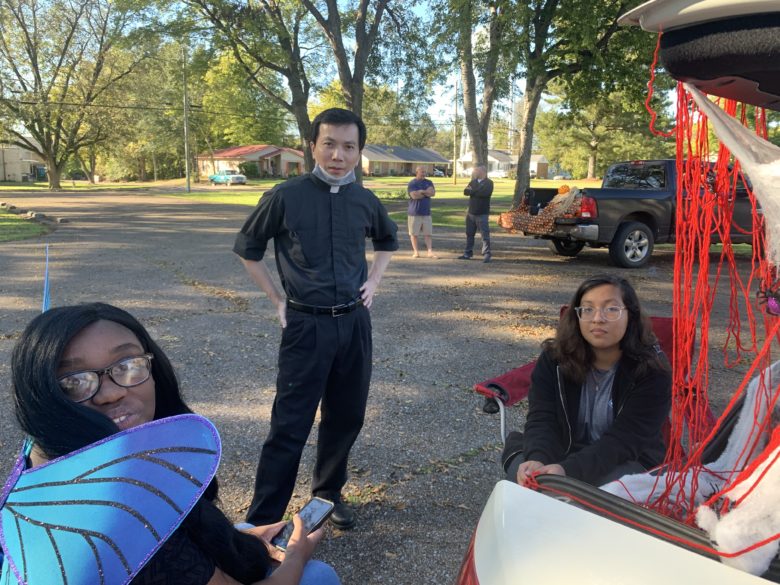
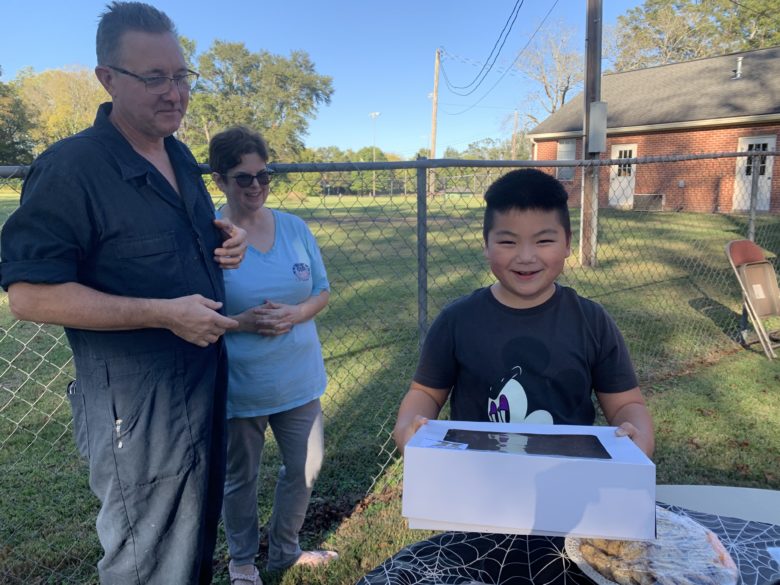
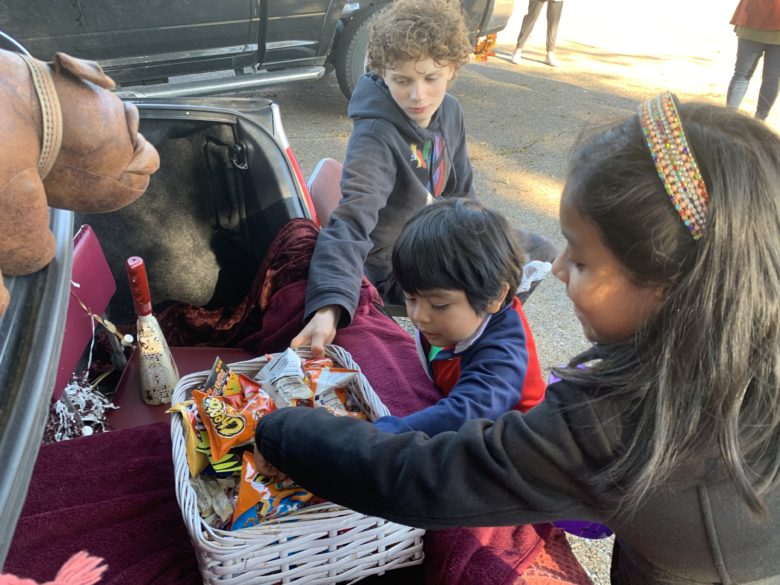
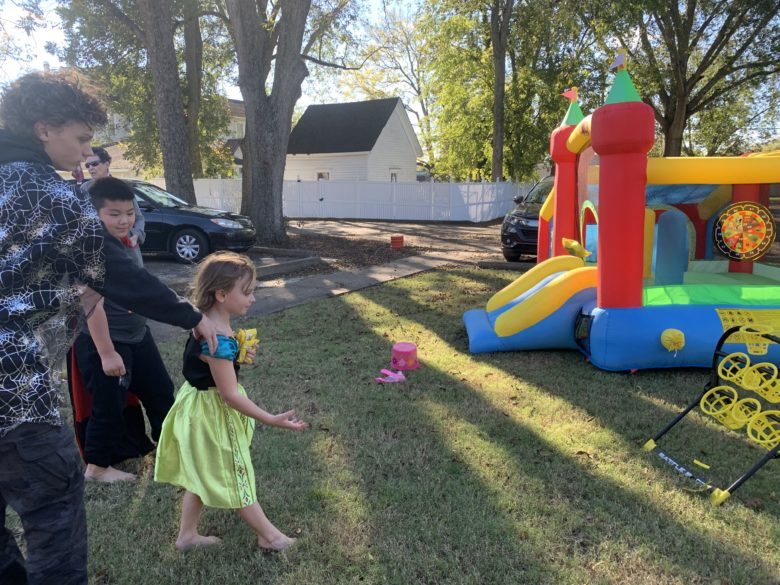

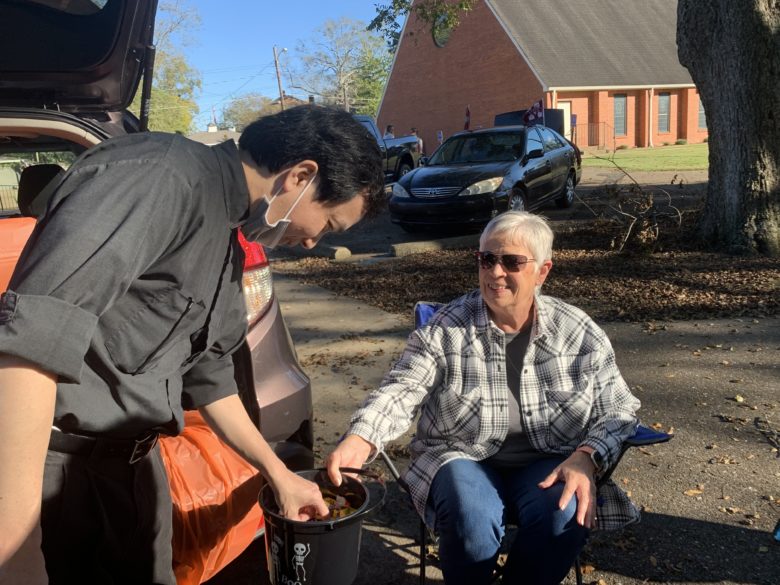
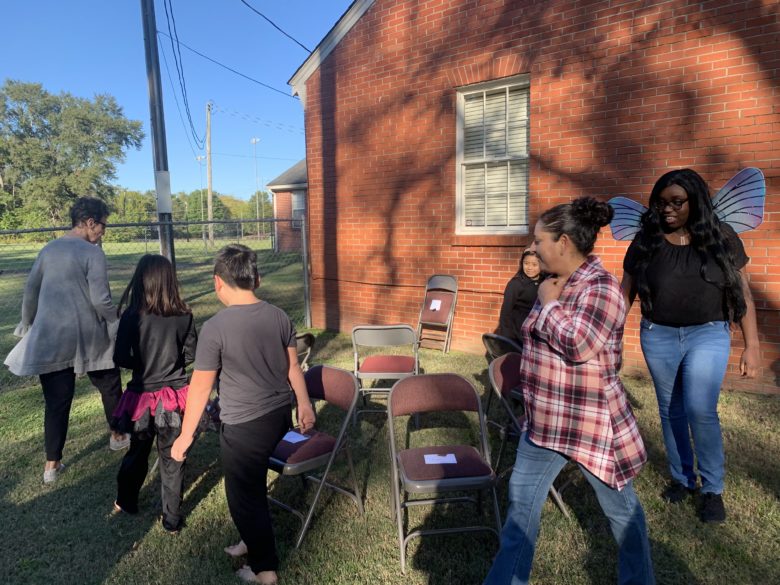
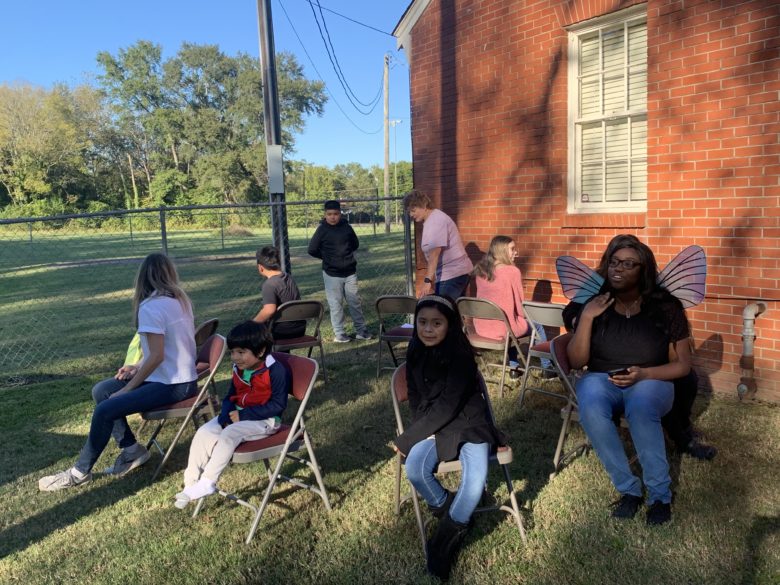
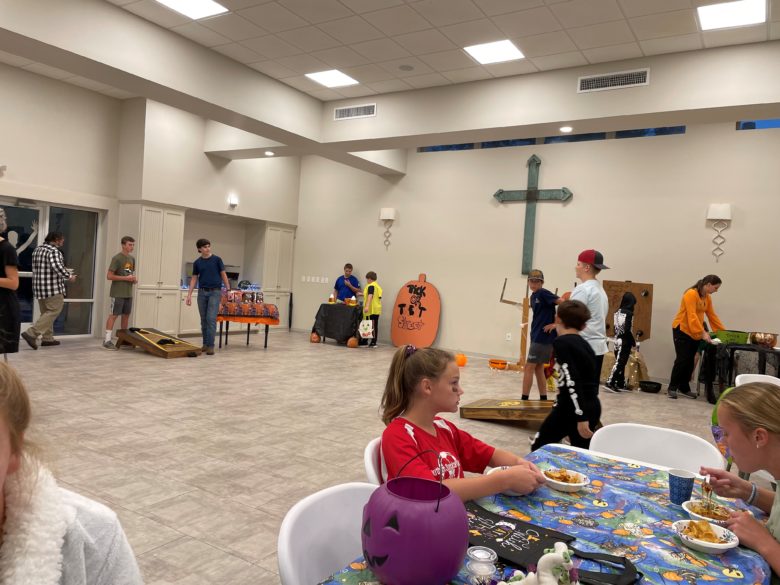
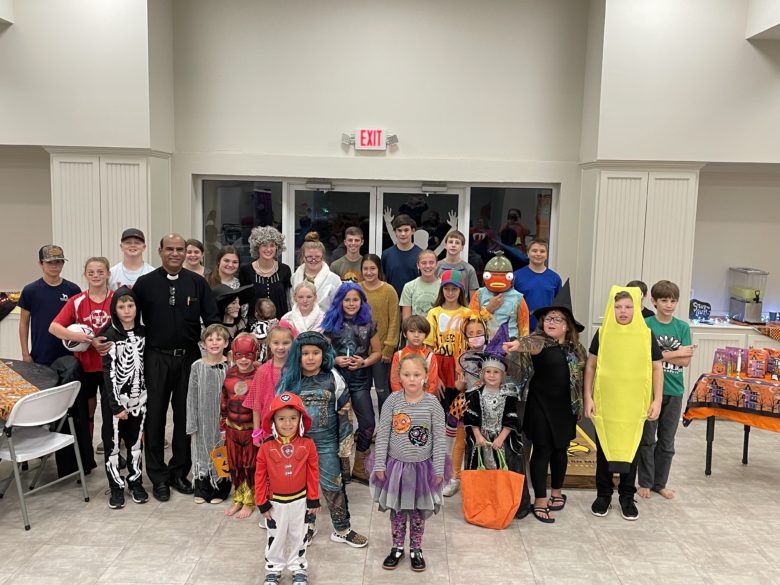
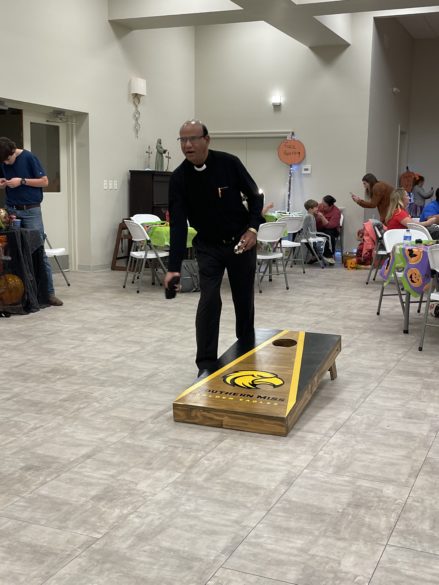
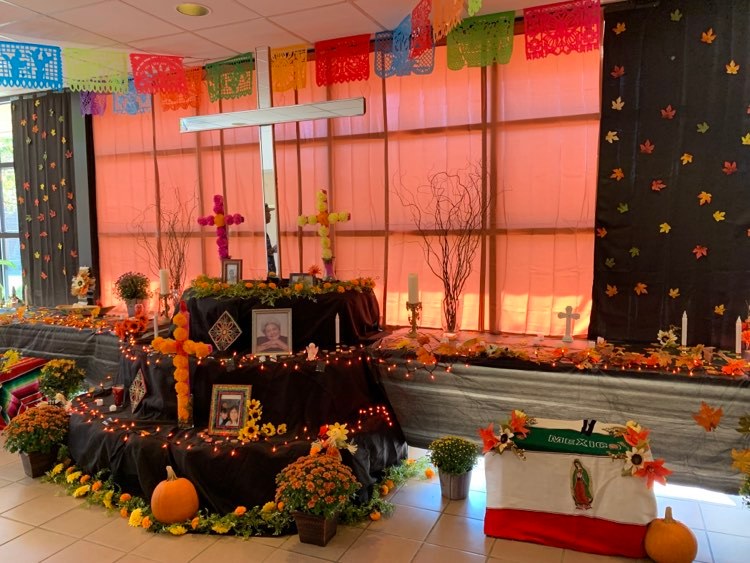
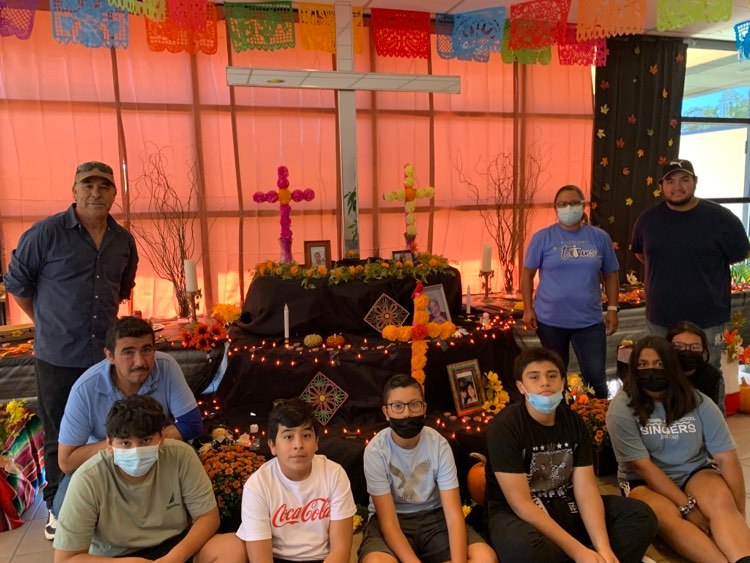
By Joanna Puddister King
JACKSON – Pope Francis launched preparations Oct. 9-10 at the Vatican for the World Synod of Bishops, which will take place in 2023. On the theme “For a Synodal Church: Communion, Participation, Mission,” the church is seeking input from dioceses around the world, with most bishops kicking off the local listening process with opening Masses beginning Oct. 17.
In the Diocese of Jackson, Bishop Joseph Kopacz launched the Synod of Bishops on Oct. 24 with an opening Mass at the Cathedral of St. Peter the Apostle in Jackson.
Since the Second Vatican Council, the church has held Synods of Bishops, most recently focusing on topics such as the family and young people. This synod focuses on the topic of synodality itself.
“The undertaking is called Synod on Synodality, which can sound like ‘church speak’ when you first hear it,” said Bishop Kopacz at the opening Mass for the synod in the diocese.
“But it has deep roots in our church tradition as a people of faith, as baptized Catholics, as disciples of the Lord.”
In his homily, Bishop Kopacz challenged us to reimagine the birth of the church on the first Pentecost, nearly 2000 years ago. With disciples of the Lord Jesus, praying intensely for the faith-filled gift of the Holy Spirit.
“This is the image of synodality,” said Bishop Kopacz.
“Pope Francis wants the church to gather in prayer for a number of months leading into a year and then a second year, so there will be time to absorb all that the Spirit is speaking to the church.”
Bishop Kopacz says that during the next two months, the diocese will be laying the groundwork for the synod process in the diocese – preparing materials and training facilitators to conduct parish listening sessions. Then, to be followed by regional meetings to be held in the first few months of 2022.
“Beyond the mainstream of our parishes, schools and other ministries we will also invite many more to participate through social media platforms in order to reach out to the unchurched, the marginalized and the alienated,” said Bishop Kopacz.
“From across the diocese, we hope to receive a very good response – potentially thousands of responses,” said Bishop Kopacz.
“It will be work bringing this together into a 10-page synthesis. But what a story; that we can understand on a deeper level, who we are as a people of God in the Body of Christ, in the Diocese of Jackson.”
Fran Lavelle, director of faith formation for the diocese, was selected to lead the planning for the synod in the diocese, along with an advisory council. She says that the synod is “not a pastoral planning process, nor is it a free for all ‘gripe session.’”
“It is an opportunity for the people of God to pray together and ask of ourselves as individuals and within our church community where we are being called in our journey together. It provides a moment in time for the universal church to look at the greatest issues facing God’s holy people and asking how are we to respond as we embody the Gospel.”
In their planning document, the Vatican asks that each diocese contemplate two questions: How does this “journeying together” take place today on different levels (from the local level to the universal one), allowing the church to proclaim the Gospel; and what steps is the Holy Spirit inviting us to take in order to grow as a synodal church?
In April, all responses will be gathered and organized into a synthesis that will eventually go the Vatican. “The summary will be made available for the diocese as a very important body of material for our discernment in light of our mission and our ministries,” said Bishop Kopacz.
In 2023 after this worldwide process, Pope Francis will speak to the church and to the world the essence of what the Holy Spirit has spoken to the church.
Lavelle says to begin praying now for wisdom and understanding during the synod process.
“When your parish gathers to listen to one another, may you be fortified with the knowledge that your voice matters.”
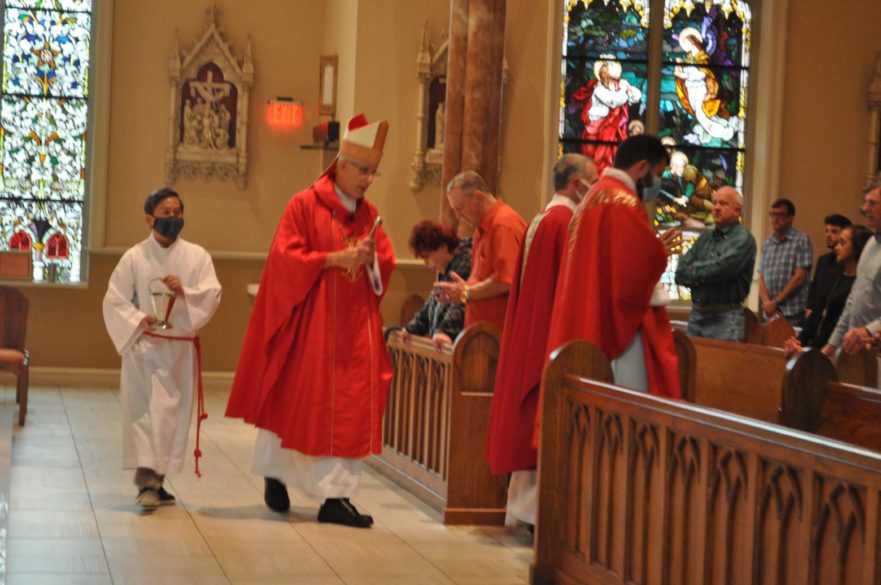
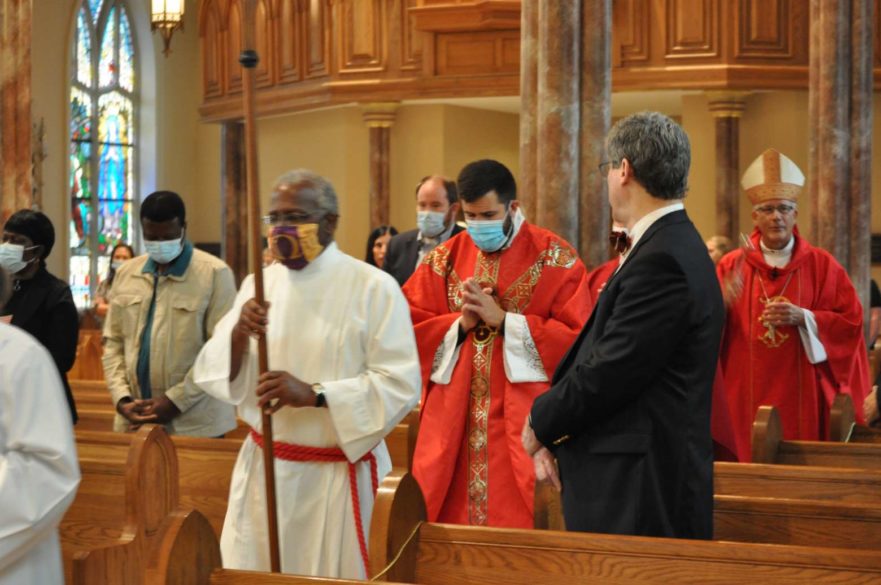
By Berta Mexidor
CAMDEN – “There is no truer proof of a great love of God than a great love of our neighbor.” Father Thomas Judge, Founder of Trinity Missions
Hundreds of parishioners from four parishes gathered at Sacred Heart Camden to celebrate 100 years of Trinitarian Missions with a Mass celebrated by Bishop Joseph Kopacz and concelebrated by the Trinitarian priests, Fathers Mike Barth, general custodian of Trinity Missions, Odel Medina, Guy Wilson, Gustavo Amell, Raul Ventura, Alexis Zuniga Velasquez, Robert “Bob” Goodyear; in addition to Father Mike O’Brien of Sacred Heart Canton.
Bishop Kopacz recognized the Trinitarian’s servants’ deeds serving four Bishops before him, Bishops Gerow, Brunini, Houck and Latino, and thousands of Catholic Mississippians for more than 77 years. “We have the spirit of awe, for all what God has done for us … The Holy Spirit is flying above this assembly … because we are children of God. We have a spirit of hope and gratitude,” Bishop Kopacz said in his homily.
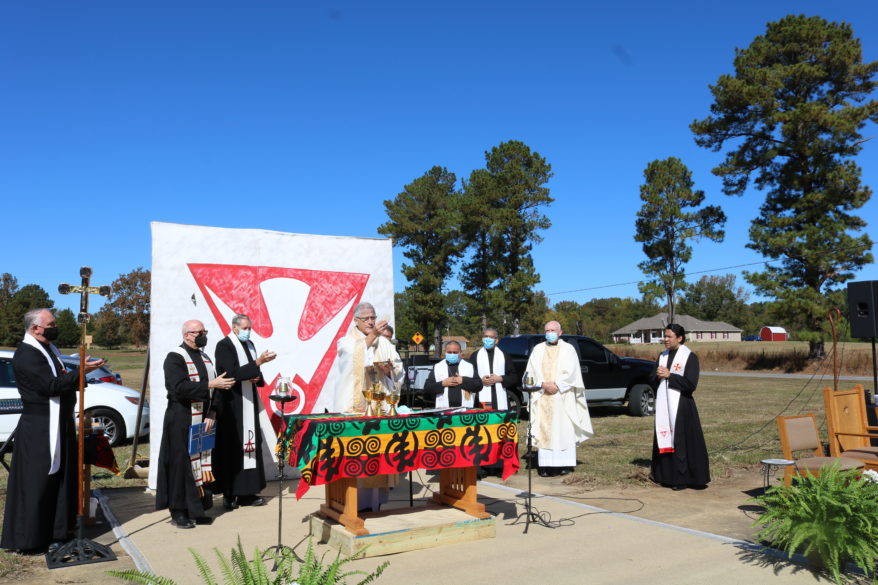
The apostolic Spirit, that Father Judge envisioned 100 years ago makes “missionary disciples offer the fire of God to all. This celebration is the first day of 100 more years,” Bishop Kopacz concluded.
At the end of the Mass, Father Mike Barth gave recognition plaques for their contribution to the Trinitarian Missions to representatives of Sacred Heart Camden, Holy Child Jesus Canton, St. Therese Kosciusko, St. Anne Carthage, Holy Rosary Indian Mission, Sister Mary Anne Poeschl, RSM and Bishop Kopacz. Father Barth also blessed the renovated cross in front of the Sacred Heart Camden Church; and Father Guy Wilson, ST created a ceramic necklace in memory of the centennial celebration for each attendee.
Foundation of the Trinitarians
It only takes a tiny spark from the Holy Spirit to ignite a fire that grows into something magnificent. And for the Trinitarians that spark grew into an institution that has helped millions of people over a 100-year period.
In this case, the Holy spark came in 1909 from six female volunteers in Brooklyn, who met with Father Thomas Judge to discuss their interest in assisting Catholic immigrants. They began an outreach program to visit homes and offer what help they could. This was the beginning of the Missionary Cenacle Apostolate (lay missionaries).
Father Judge, a son of Irish immigrants, arrived in Opelika, Alabama, an area with very few Catholics, in 1920. He then began forming lay groups or “cenacles.”
Due to their hard work and zeal for the salvation of souls, the Cenacle was then formally recognized by Bishop of Mobile, Edward Patrick Allen, in 1921.
Today, there are over 145 Missionary Servants of the Most Holy Trinity in missions around the world, most within the United States.
Trinitarian history reaches back 77 years in Mississippi
History books recall that Trinitarians first came to Mississippi in 1944, represented by Father Andrew Lawrence, ST, taking responsibility of Immaculate Conception, and at that moment, its missions: Sacred Heart on Sulphur Springs Road near Camden and St. Anne in Carthage.
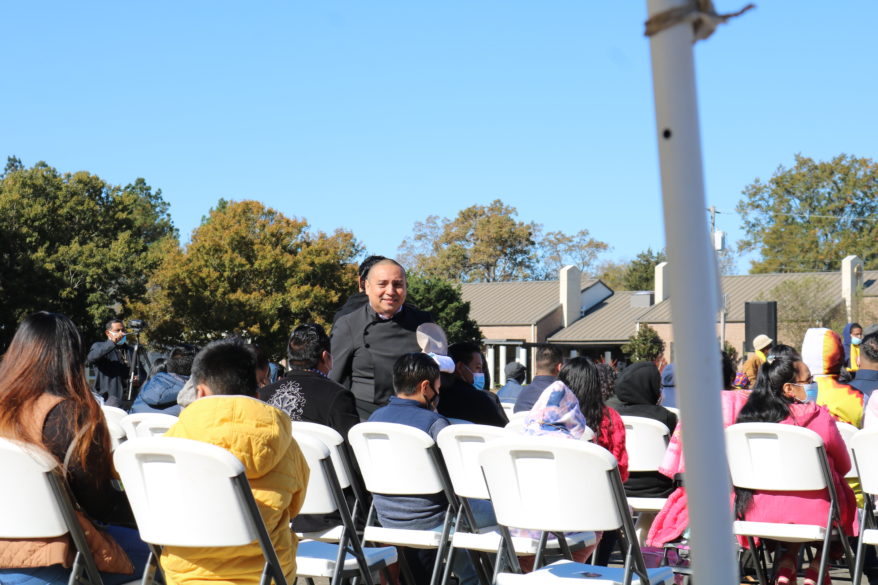
With the direction of Bishop R. O. Gerow, Father Lawrence started looking for a place to first build a church, then schools to follow, to improve the lives of local African Americans – this led to a place named Sulpher Springs.
According to Cleta Ellington’s 1989 book, Christ: The Living Water, Sulphur Springs was an extension of land that no one knew where it started, nor where it ended. But there was a Catholic church there, its roof collapsing under snow in 1923, and then rebuilt in Camden with the name of Immaculate Conception of Sulphur Springs around 1927, which then became the first church where Father Lawrence and the Trinitarians began their missions in Mississippi in 1944.
After the church, Father Lawrence and the Trinitarians founded the Sacred Heart Agricultural School in Sulphur Springs for African American youths. The school enrolled over 140 students at one point and was highly praised by the Mississippi Department of Education. Then sadly, the school was destroyed by fire and burned down in 1954.
In her book, Ellington also highlighted the struggles of the Trinitarians creating the Holy Child Jesus’ school in Canton, and how a little, non-Catholic Black girl named Bertha Bowman came to enroll in this school. Of course, this little girl grew up and became the first black Franciscan Sister of Perpetual Adoration – Servant of God, Sister Thea Bowman.
In another amazing turn of the history of Missionary Servants of the Most Holy Trinity in Mississippi, the small spark from the Holy Spirit back in 1909 ended up touching the Choctaw Reservation in Philadelphia beginning back in 1944.
From 1975 to 1990 and again from 2006 to the present, Father Robert “Bob” Goodyear, ST has served at the Holy Rosary Indian Mission in Philadelphia. Each Sunday he drives nearly 90 miles to three parishes to celebrate Mass for the Choctaw community. Recently, the work of Father Goodyear was highlighted nationwide when he was recognized as a finalist for the Catholic Extension Lumen Christi award.
In 2019, two Trinitarian priests were at the center of the aftermath of a massive raid against immigrants in Mississippi, Father Odel Medina, of St. Anne Carthage, was one of them. The support they received from volunteers and the whole community, along with their leadership hit the standards set by Fathers Judge and Lawrence years ago.
After almost 10 years in Mississippi, Father Odel has witnessed the growth of the Hispanic community in the state. He views the growth as fruits of the legacy of the Trinitarian founders, ”preserving the faith among immigrants.”
“Father Judge started with mainly the Italian immigrants, here in Mississippi. Hispanic immigrants [are] a new phenomenon and numbers are increasing … The future is going to a pluricultural church,” he said.
“This centenary is a jubilee,” said Father Odel. “I have been walking with all my parishioners, in good and bad times, but mainly with the most vulnerable, it has been a blessing for me.”
In one hundred years, the Trinitarians have accomplished more than just building schools and church buildings, they have touched millions of people from all different backgrounds, races and creeds.
(Joanna Puddister King contributed to this article.)
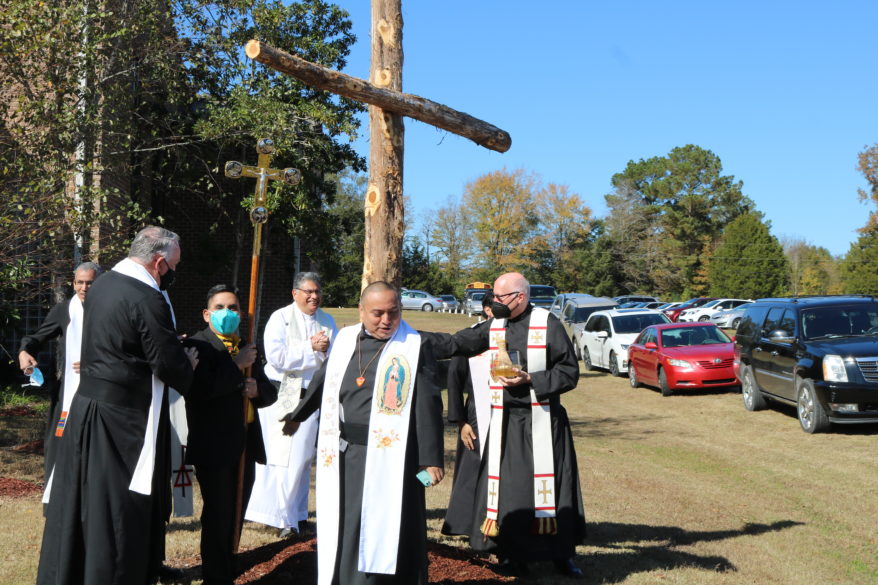
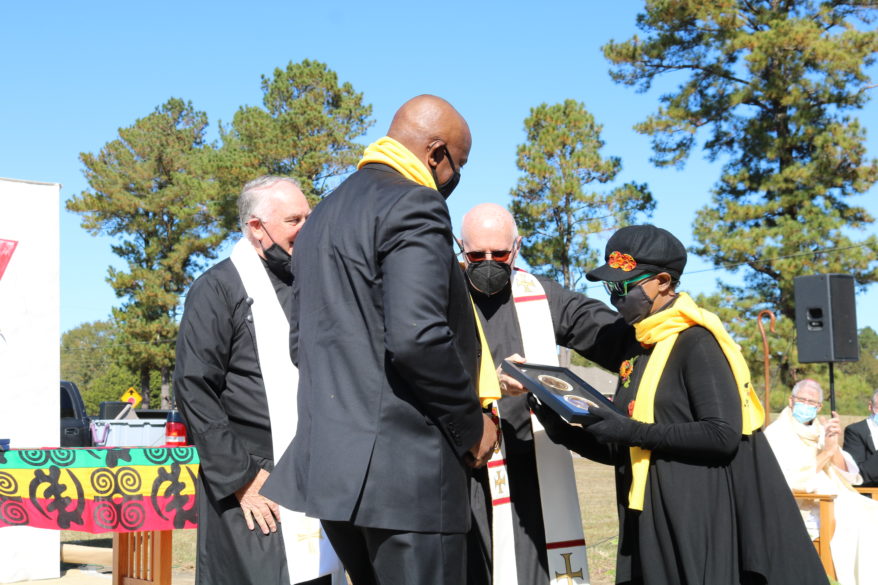
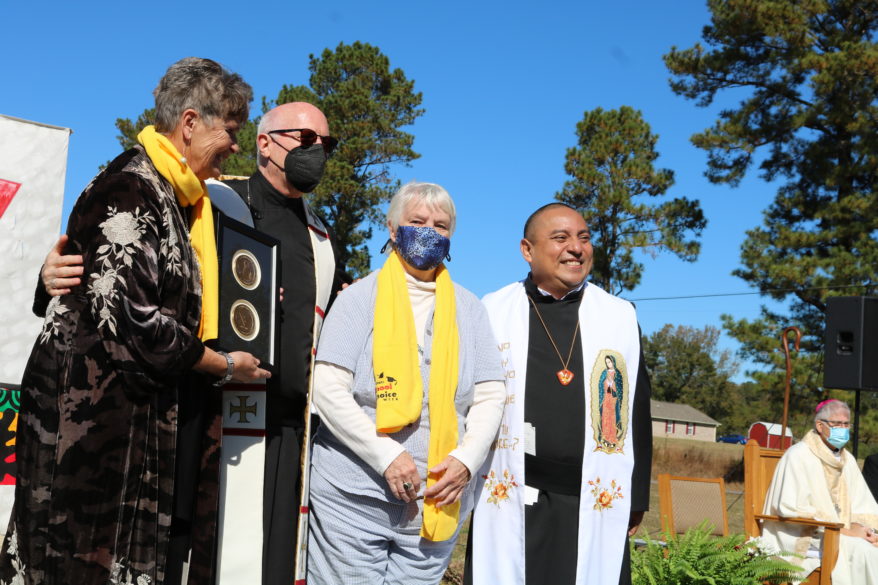
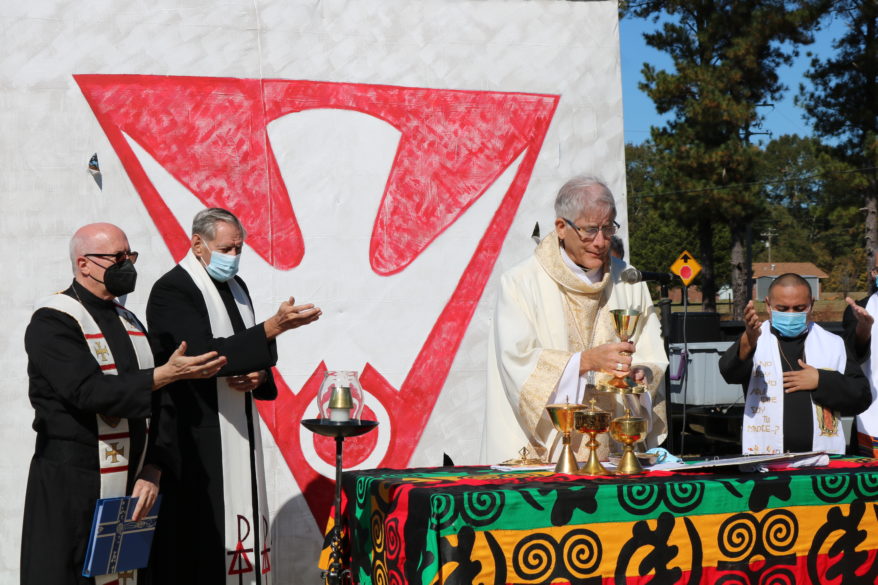
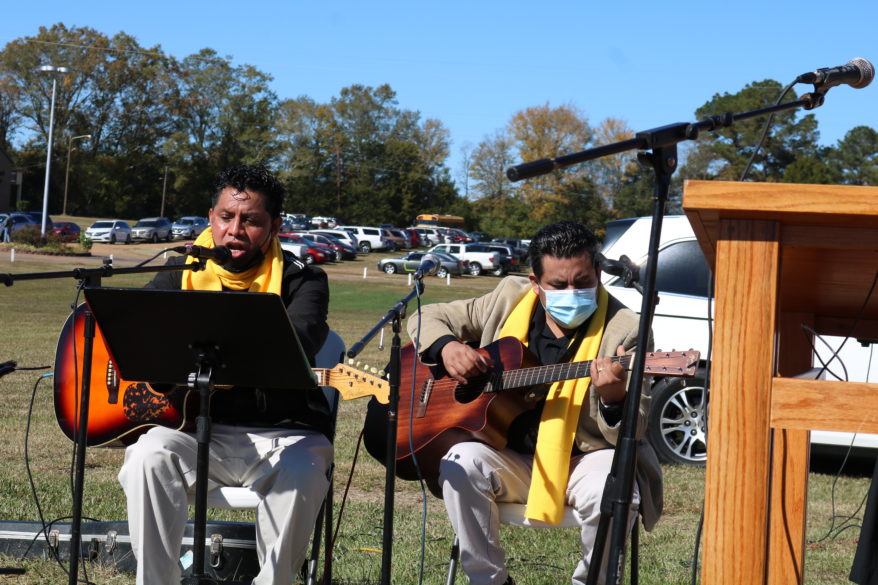
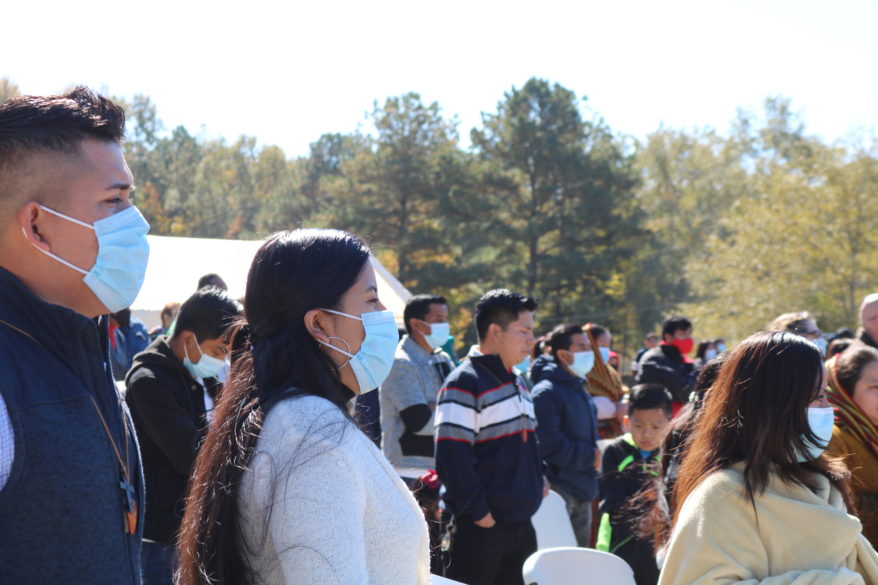
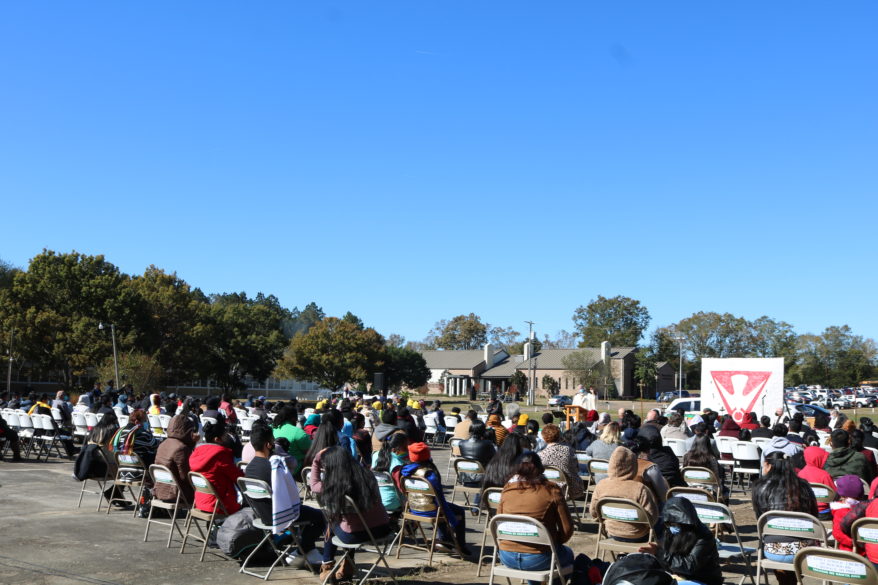
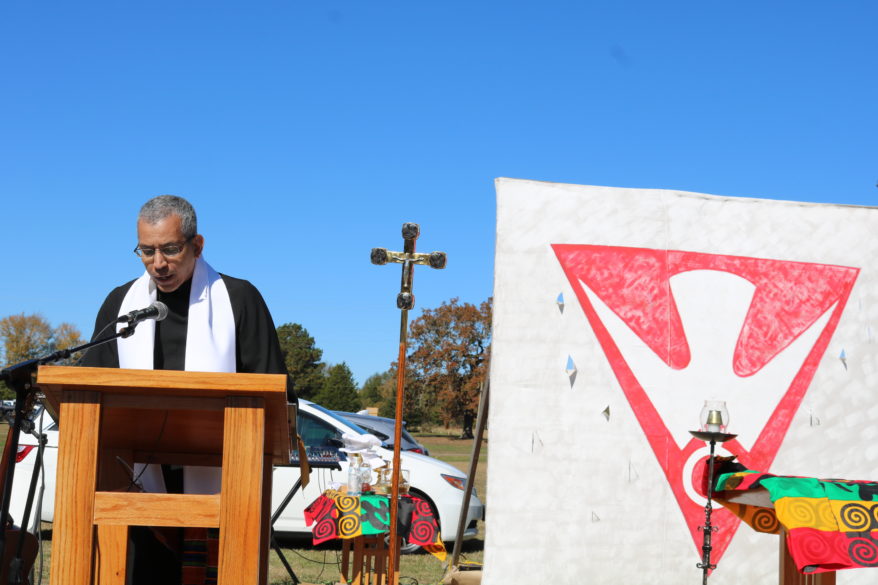
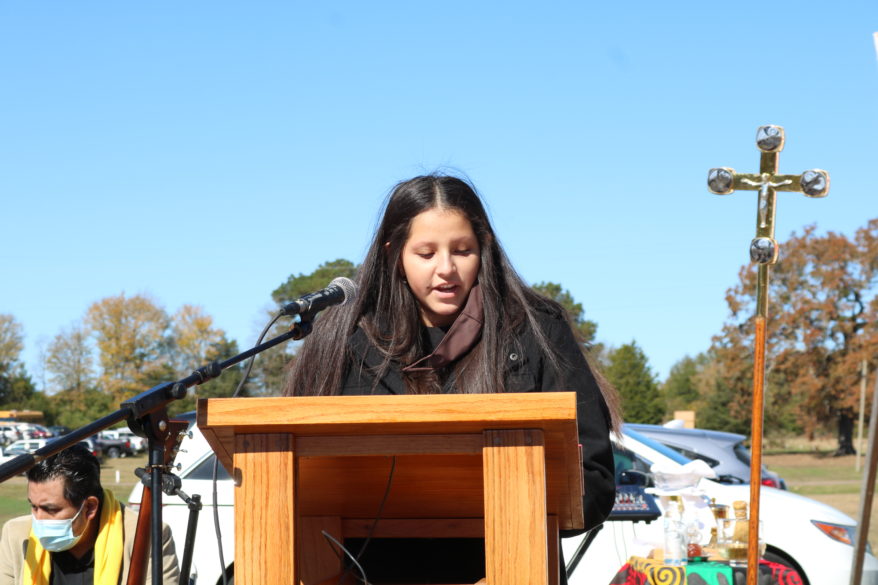
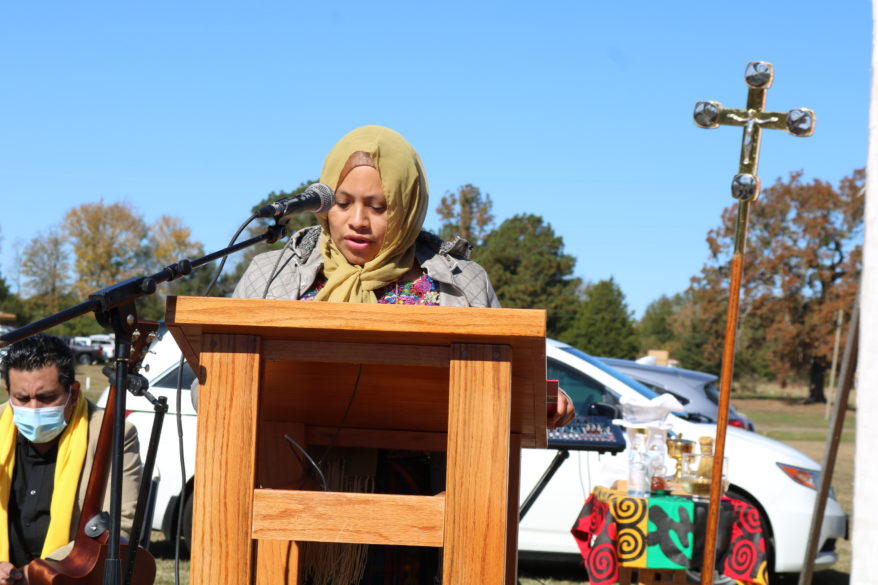
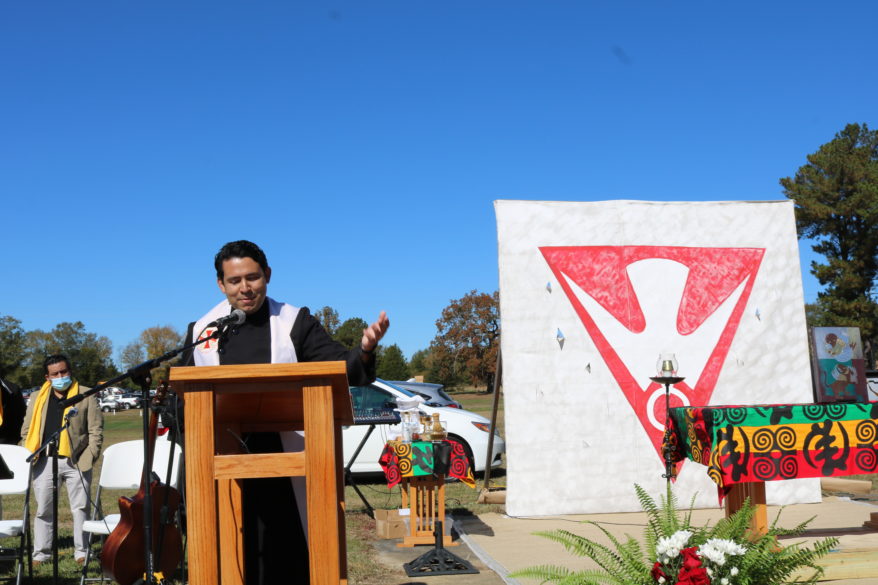

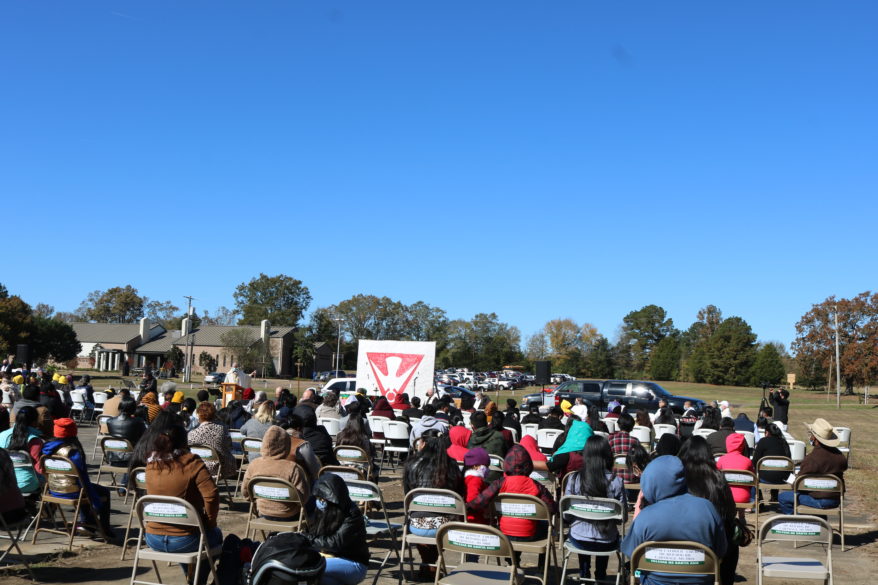
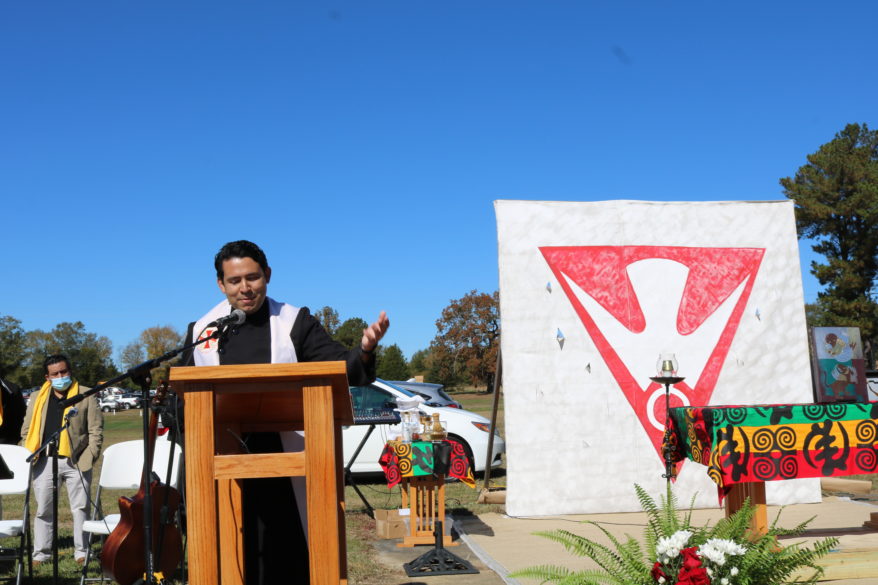
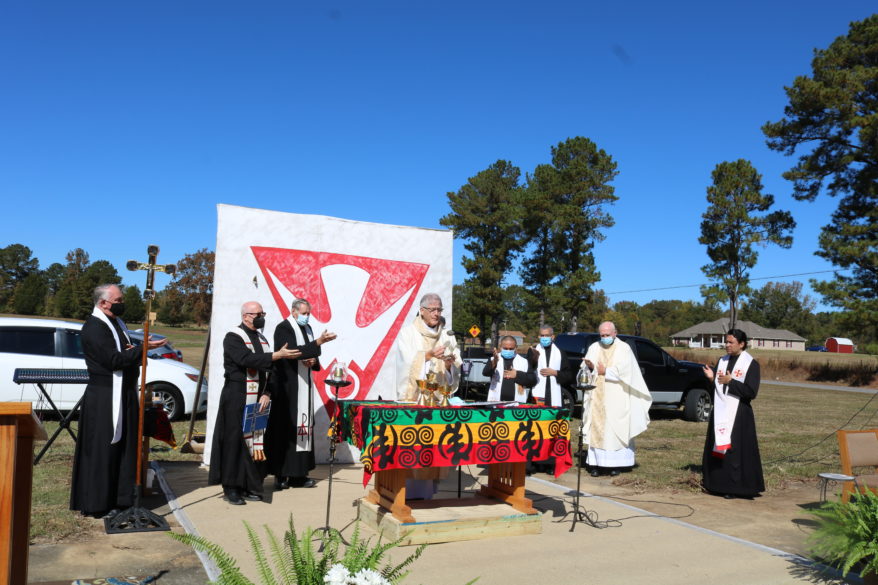
Anyone who has been a victim of abuse or exploitation by clergy, religious or lay church personnel and has not yet reported it is encouraged to do so.
Our victim assistance coordinator, Erika Rojas, a licensed social worker, is available to assist in making a report. Please contact her at (601) 326-3760.
To report an allegation of abuse or mishandling of allegations of sexual abuse by a bishop, please visit https://reportbishopabuse.org.
By Catholic News Service
WASHINGTON – More than 4,200 allegations of sexual abuse of minors by Catholic clergy and others were reported during the year ending June 30, 2020, a slight decline from the previous auditing period, according to a report on diocesan and eparchial compliance wit the U.S. bishops’ “Charter for the Protection of Children and Young People.”
Released late Nov. 9, the 18th annual report from the U.S. Conference of Catholic Bishops’ Secretariat of Child and Youth Protection stated that 3,924 child sexual abuse survivors filed 4,228 allegations.
In the 2019 report, covering the 2018-2019 audit period, 4,220 adults filed 4,434 allegations.
The charter was adopted in 2002 by the U.S. bishops following widespread reports of clergy abuse and has been revised several times since to adapt to changing situations surrounding the question of clergy sexual abuse of minors.
Conducted by StoneBridge Business Partners of Rochester, New York, the new report covers the year from July 1, 2019, through June 30, 2020.
While the number of allegations remained high during the audit period, the report said only 22 allegations involve current cases of abuse.
The report said the number of allegations remained high in part because of changes in statutes of limitations on reporting abuse in several states. “It should be noted that the vast majority of these reports were historical in nature,” the report said.
The report attributed about 66% of allegations to lawsuits, compensation programs established by dioceses and other entities and bankruptcies. In addition, 1% of allegations emerged after a review of clergy personnel files, according to the report.
Of the 22 allegations for the current year, six were found to be substantiated. The report said they originated from five dioceses.
Of the remaining reported allegations, seven continued to be investigated, two were unsubstantiated, three were determined to be “unable to be proven,” and four were classified as “other.”
The report said nine of the allegations involved the use of child pornography. Seven of those cases remained under investigation, one was substantiated and one was referred to a provincial or a religious order.
The allegations involved 2,458 priests, 31 deacons and 282 unknown clerics, statistics in the report show.
The report indicated that 195 of 197 dioceses and eparchies participated in the audit. Auditors conducted 61 onsite visits with 10 in person before the pandemic erupted in early 2020. The other 51 were conducted online. Data also was collected from 135 other dioceses and eparchies.
The Syro-Malankara Eparchy of St. Mary Queen of Peace of the United States and Canada and the Chaldean Catholic Eparchy of St. Peter the Apostle of San Diego did not participate in the audit.
Of the 61 entities undergoing onsite audits, two dioceses and two eparchies were determined to be in noncompliance.
The dioceses of Fort Worth, Texas, and Helena, Montana, were noncompliant with charter’s requirement for not having their respective Diocesan Review Board meet during the audit period. Subsequent to the audit, the boards in each diocese were convened, making them compliant with the charter, the report said.
Meanwhile, the Ukrainian Catholic Eparchy of St. Nicholas in Chicago and the Syriac Catholic Eparchy of Our Lady of Deliverance, which covers the United States and is based New Jersey, were found noncompliant with charter provisions that require background screening and training of adults working with minors.
The report also acknowledged the continuing work of church entities to ensure the safety of children and vulnerable adults. The USCCB said that expenditures on protective services rose 15% in 2020 with more than 2.5 million background checks of adults and training in safety measures for 3.1 million children.
Suzanne Healy, who chairs the National Review Board, said that as the charter enters its third decade of implementation it becomes important to continue evaluating incidents of abuse as well as understand trends of abuse and why they change.
In a letter to Los Angeles Archbishop José H. Gomez, USCCB president, that accompanied the report, Healy said a board committee is examining the safe environment education programs for adults and children in dioceses throughout the country.
“The research is an attempt to determine which elements or combination of elements of these training programs is most effective in mitigating the occurrence of child abuse and ensuring that any suspicion of abuse is reported to authorities,” Healy wrote.
She also said the board recommended two procedures be added to the audit process and welcomed their edition for the 2020-2021 audit cycle. The first is “a three-year look-back window, which will eliminate any gaps that existed regarding the reporting of case resolution,” Healy said.
The second relates to onsite visits by StoneBridge that finds auditors meeting with all or most diocesan review board members rather than one or two individuals.
“The ministries of safe environments and victim assistance are here to stay. The protocols and procedures for letters of suitability, background checks, and safe environment training are the norm,” said Deacon Bernie Nojadera, executive director of the USCCB Secretariat for Child and Youth Protection.
“By the grace of God, the church is working toward being accessible, accountable, and safe. We continue to rely on the Holy Spirit and the intercession of Our Mother to guide our efforts as we promise to protect and pledge to heal,” he wrote in a letter addressed to Archbishop Gomez and Healy that was included in the report.
In his preface to the report, Archbishop Gomez said: “As we know, one allegation of abuse is too many. But my brother bishops and I remain firmly committed to maintain our vigilance in protecting children and vulnerable adults and providing compassion and outreach to victim-survivors of abuse.”
Speaking for himself and the body of bishops, the archbishop expressed their “sorrow and apologies to every person who has suffered at the hands of someone in the church.”
“While we cannot give you back what has been taken from you,” Archbishop Gomez said, “we do commit ourselves to doing everything in our power to help you to heal and to fight the scourge of abuse in the church and in the wider society.”
Editor’s Note: The full annual report on compliance with the “Charter for the Protection of Children and Young People” of the U.S. Conference of Catholic Bishops can be found online at https://bit.ly/3CYMQdX.